Home Publications Lectures ITRevolution
Antonino Saggio I Quaderni
Talks
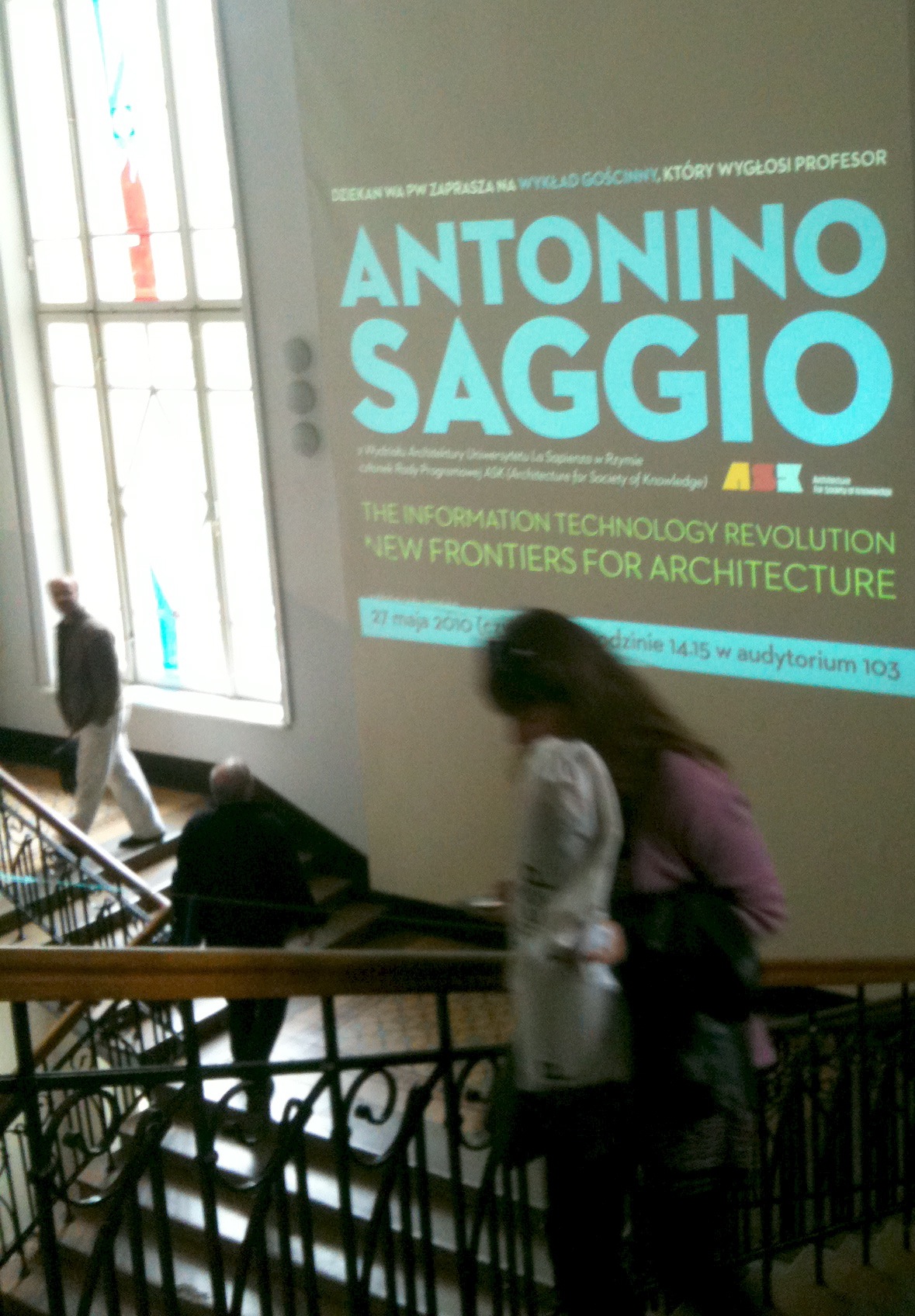
Special thanks to The School of Architecture of Warsaw and to Professor and Dean
Stefan Wrona
Faculty of Architecture
Warsaw University of Technology
Warsaw,
POLAND
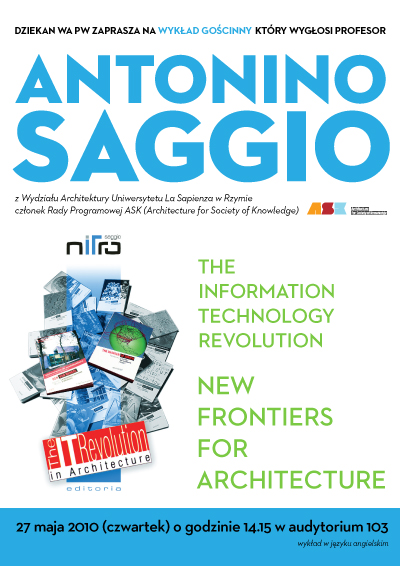
The Information Technology Revolution New Frontiers for Architecture
In the occasion of the conference the essay NEW SUBSTANCES has been translated into Polish by Philip Ciombolini Go
Just for the Warsaw Conference few days of free download of the book.
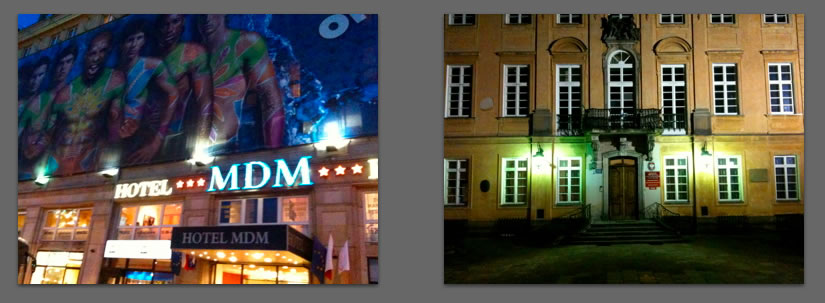
ps are:
or send email to
Antonino.SaggioATUniroma1.it
On&Off Insert on IT and Architecture
English Translation of the Italian Book Published italian by Carocci. English version is stilla vailable to roder directly from AMAZON.com At this address
Or order directly the new Edition at Lulu.com Including a new IPAD VERSION
An intellectual walk
1. Industrial city / versus Information city, key differences
2. The Changing Notion of Time | 3. The Changing Notion of Space
4. The Prothesis | 5. Looking Inside | 6. Time to Define Space |
7. What Is Space | 8. Space as Information | 9. Crisis Modernity and Information Technology |
| 10. New IT Paradigms | 11. Works
1. Industrial city / versus Information city key differences
Assembly Line vs Network
i.e. zoning vs anti zoning

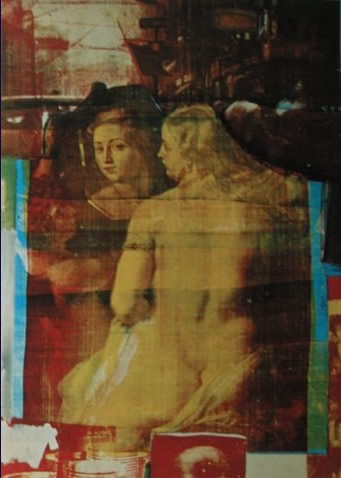
Piet Mondrian -Broadway Boogie Woogie 1942-43; Oil on canvas, 127 x 127 cm; The Museum of Modern Art, New York
Rauschenberg, Persimon, 1964
Chain vs Nets
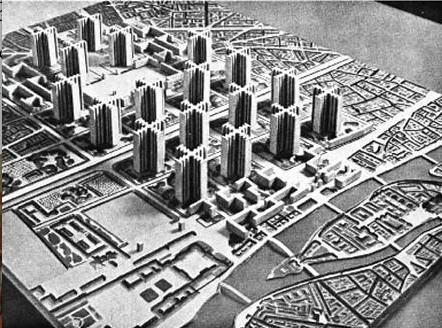
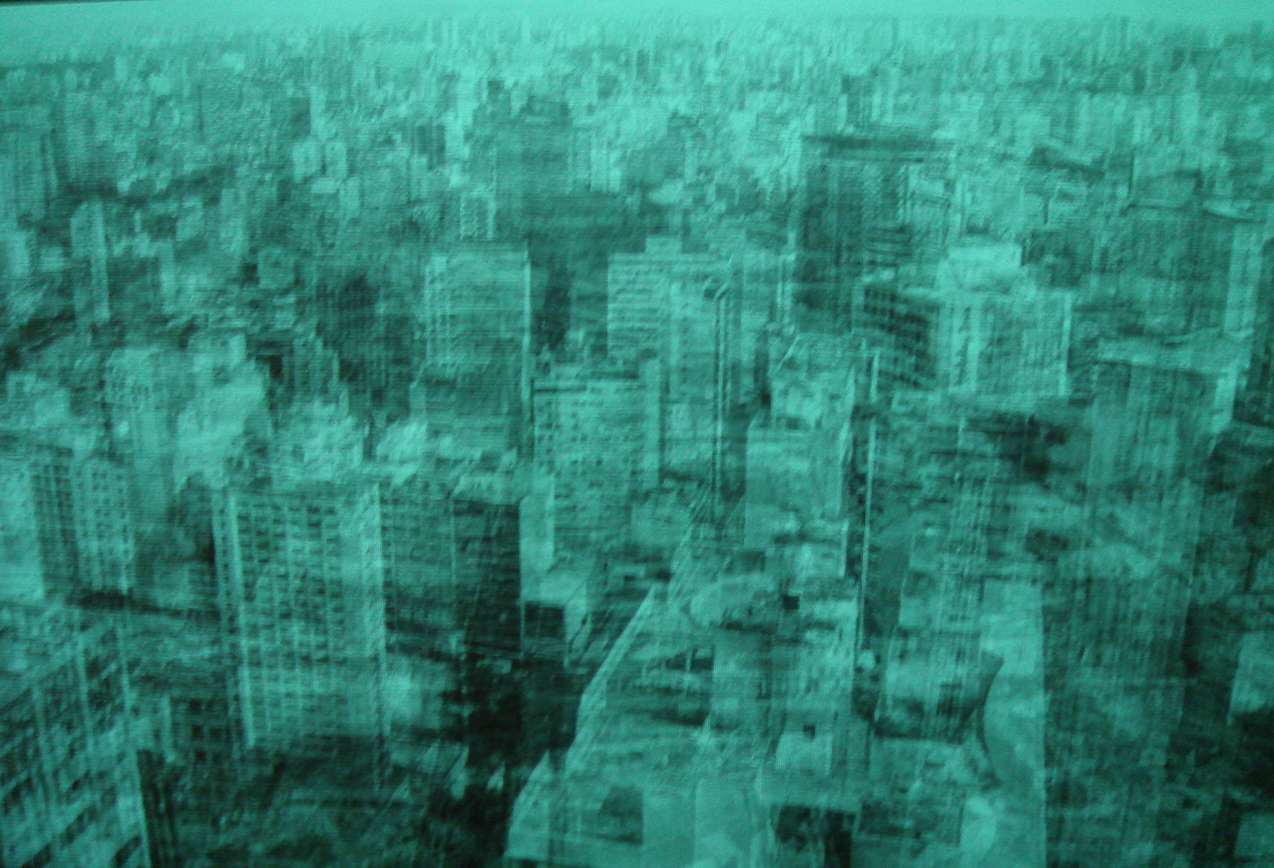
Le Corbusier, Plan Voisin, paris 1935 Michael Najjar "The Invisible citry" 2004.
Video Clip della serie Netropolis 2003-2006
in front versus in between
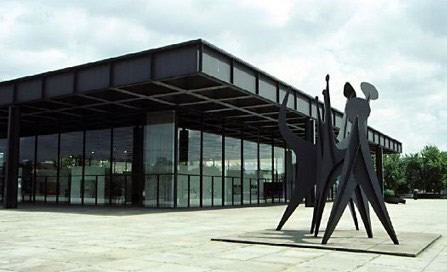
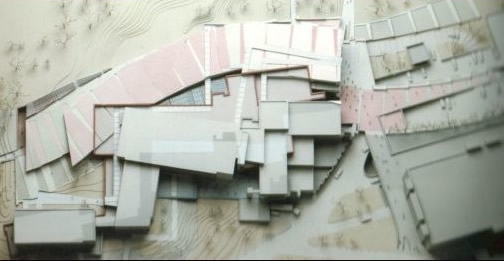
Mies | Eisenman
the far west versus nature and "ecotechnics"
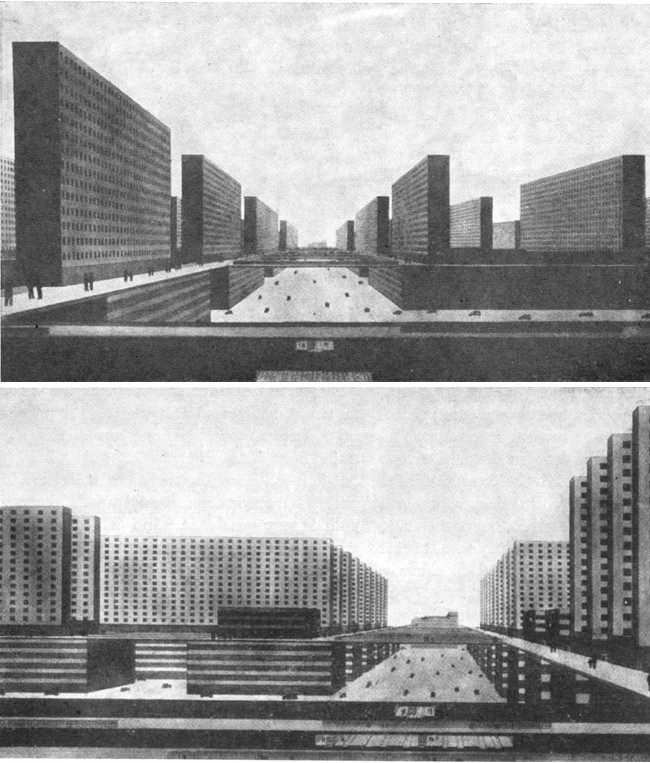
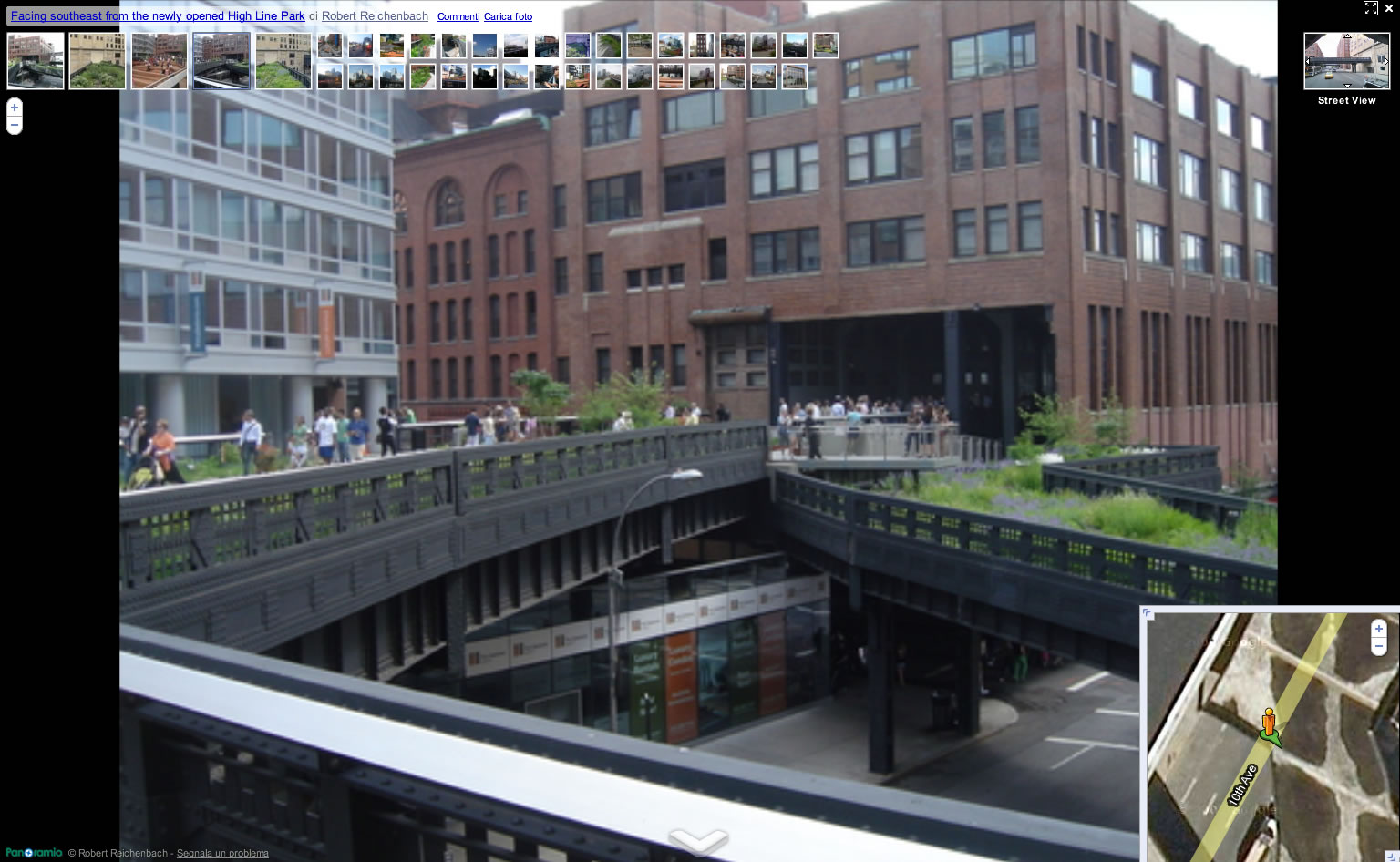
Towards Emotional interactive enviroments in the city
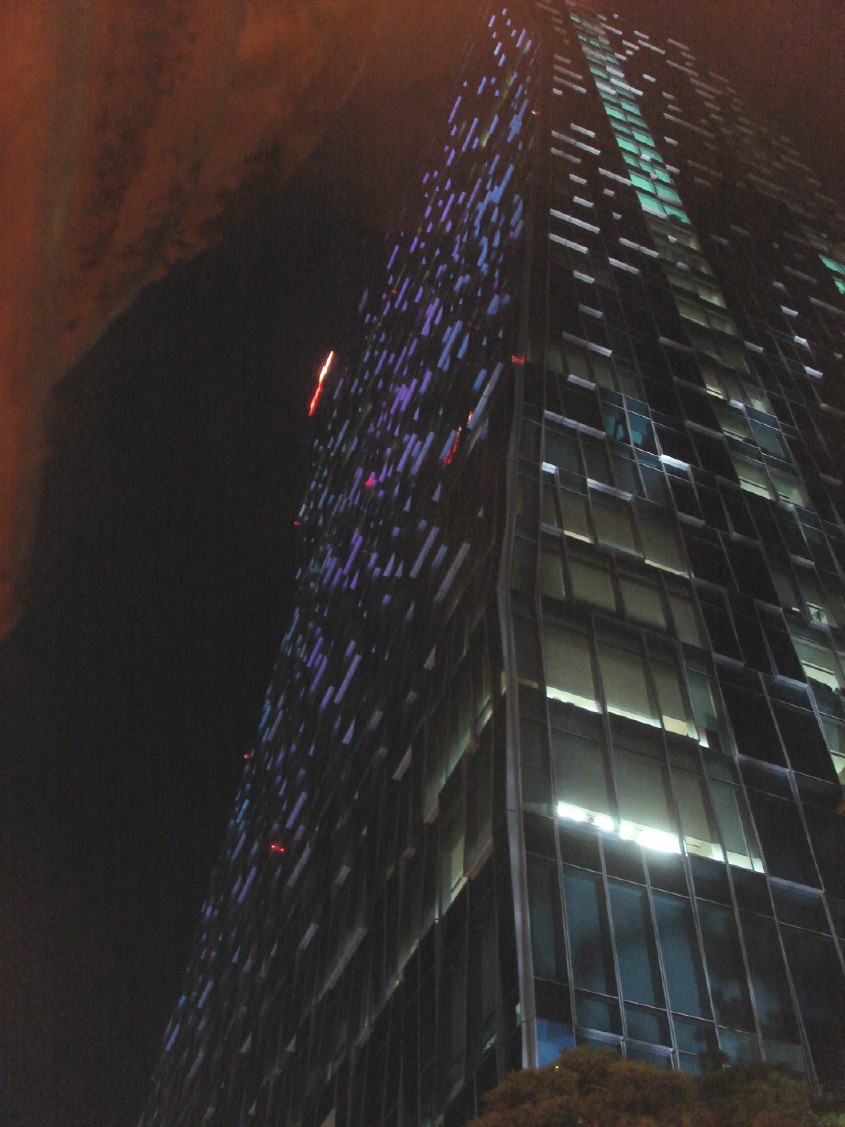
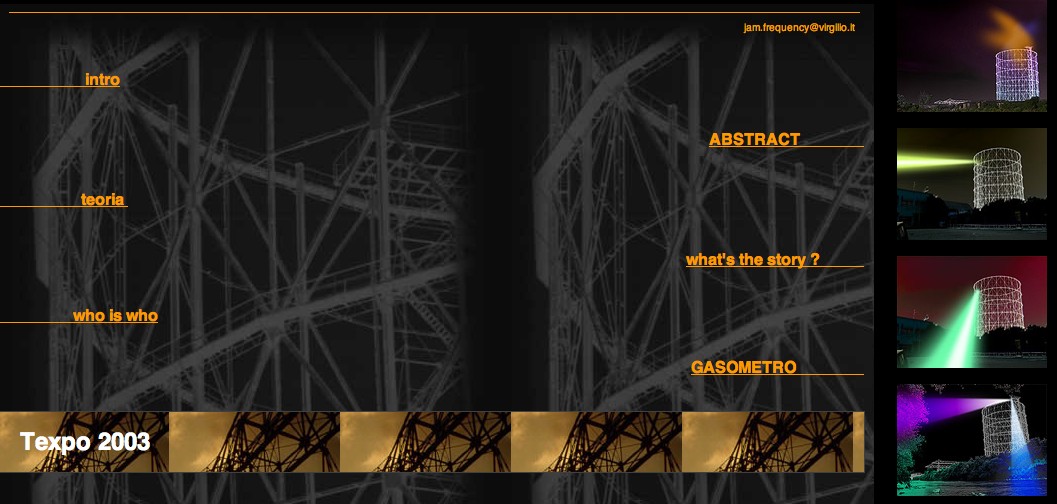
RAD Oma consultant ,Sk Building Seoul See Building Movie Local >YoTu..be >
Jam Frequency Olivieri Marco,Pitzalis Federico, Janni Gordon, Marinelli Alessandro, Saggio Course La Sapienza Local > Web >
all the works of Texpo >
2. The Changing Notion of Time
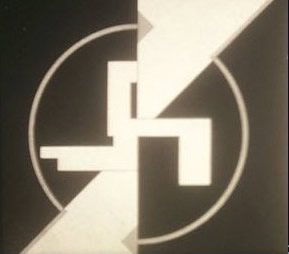
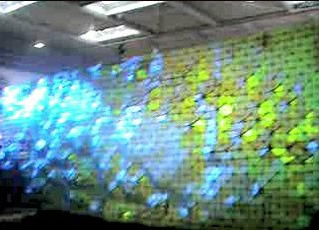
Gropius, Bauhaus, Mark Goulthorpe Decoi, >The wall
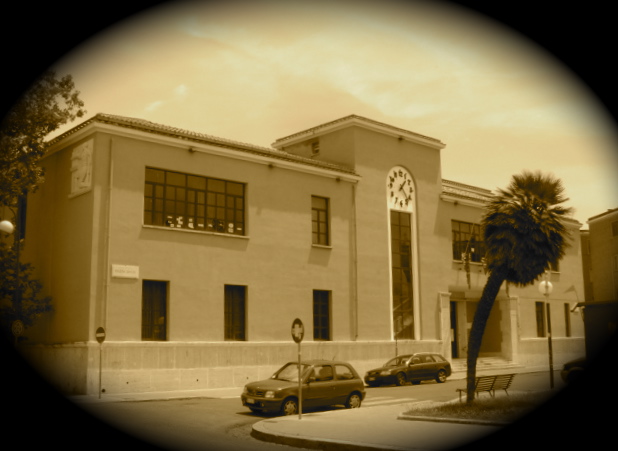
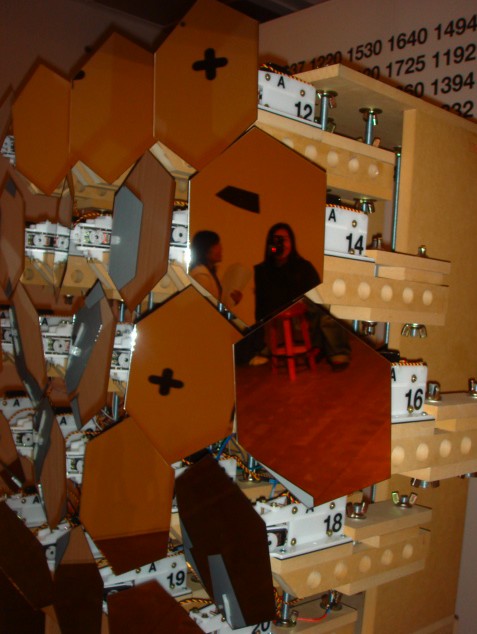
Latina Frezzotti | Visual device 2005 Choi, Byoung-li
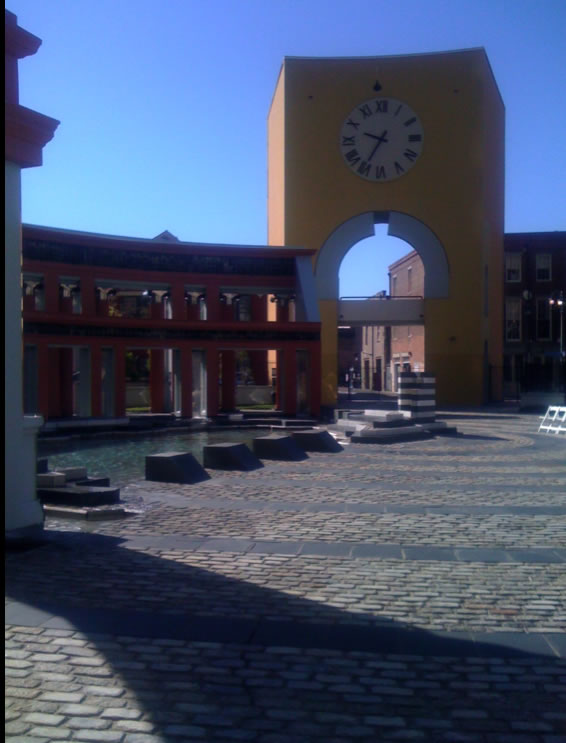
3. The Changing Notion of Space
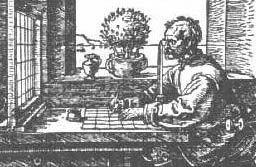
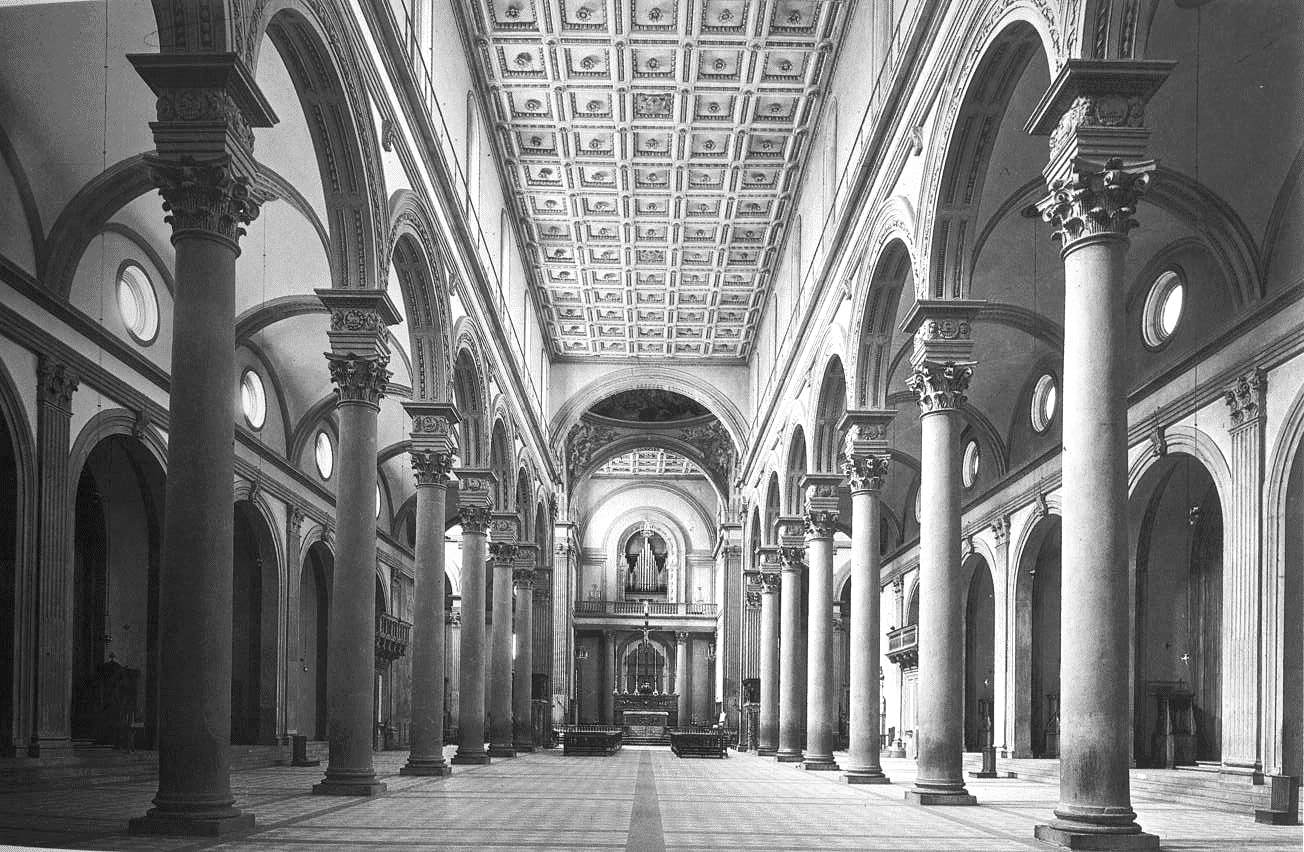
See Mathland preface >
4. The Prothesis
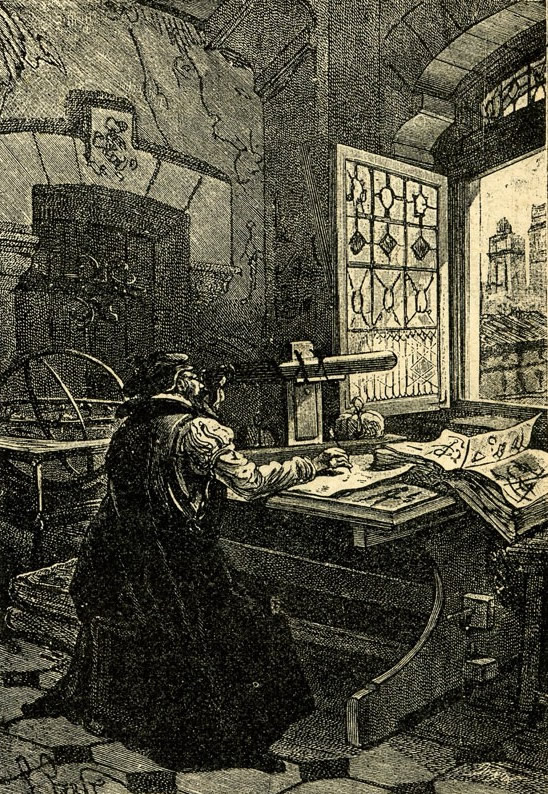
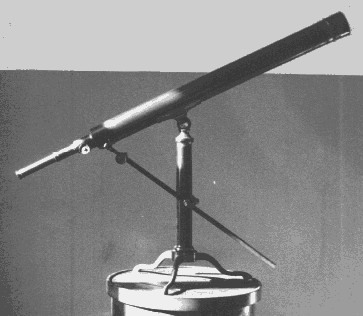
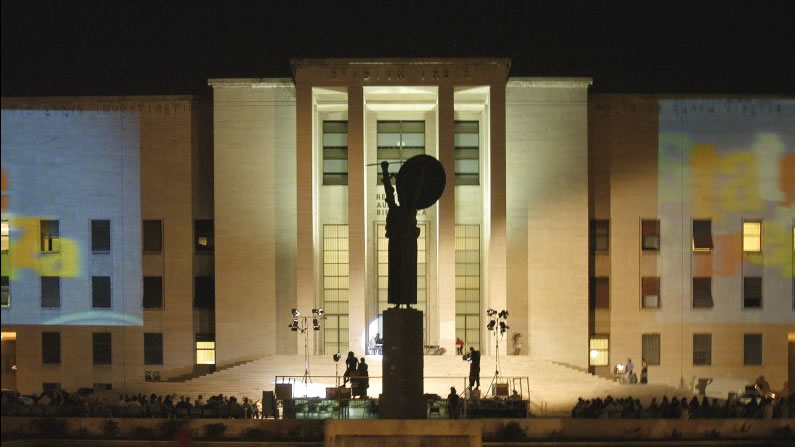
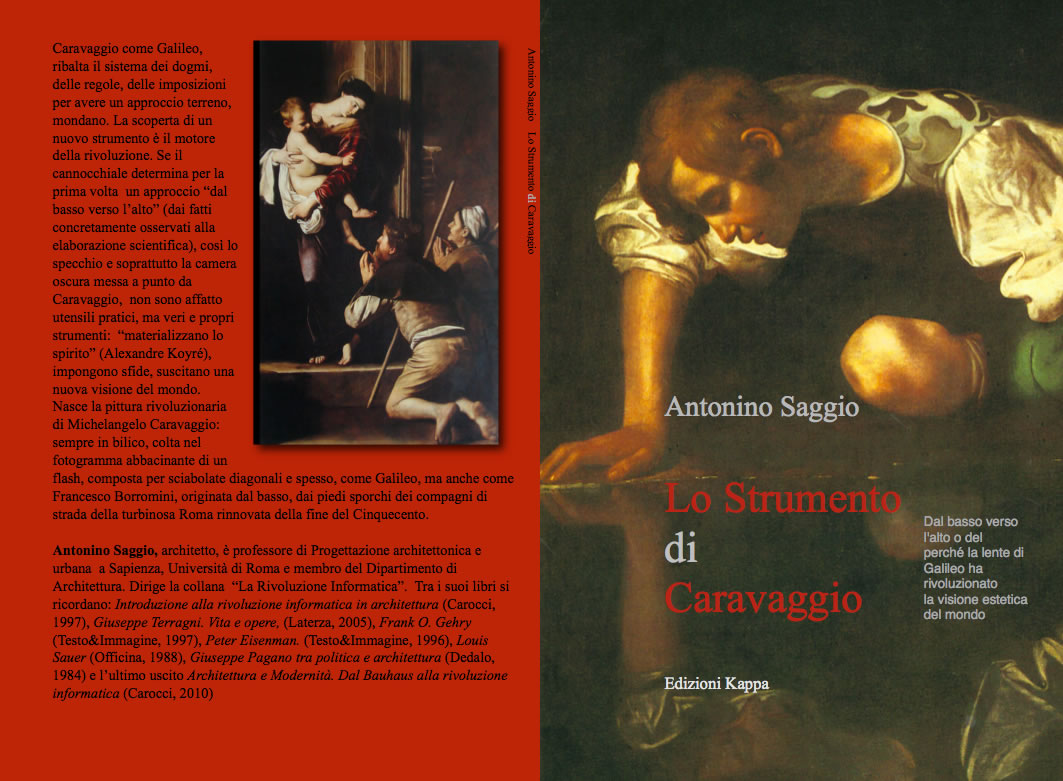
Francesco Borromini, S. Ivo alla Sapienza, (1643-1660) ; Caravaggio, Madonna di Loreto (1603-1606)
Saggio Sindrome on Borromini See movie >, Read articleIl Motivo di Sant'ivo > on Caravaggio read article 1 Il motivo di Caravaggio >, article 2 Lo strumento di Caravaggio >
5. Looking Inside


Steve (Jobs) looking inside a chip in 1976
refer also to James James Hockney "Secret Knowledge"
Thames and Hudson and to two serious AS's Sindromes Borromini >, video > Caravaggio >
6. Time to Define Space
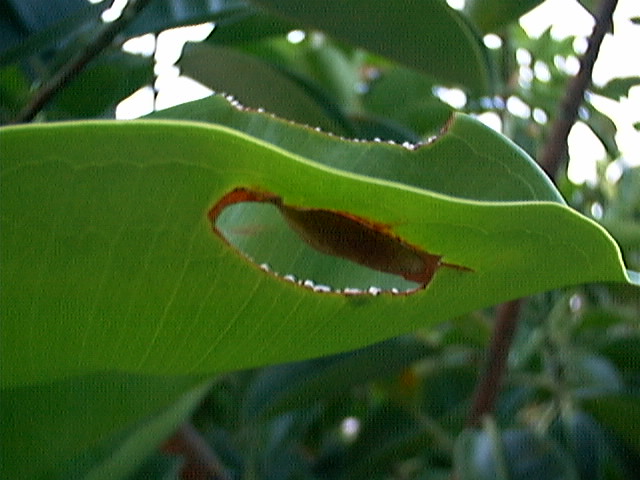
1. The Extrusion process
2. the different sub systems
3 an experiment
4. Jump
"Time is a property Created by God together with the Universe" Saint Agustin (Sant'Agostino)
7. What Is Space
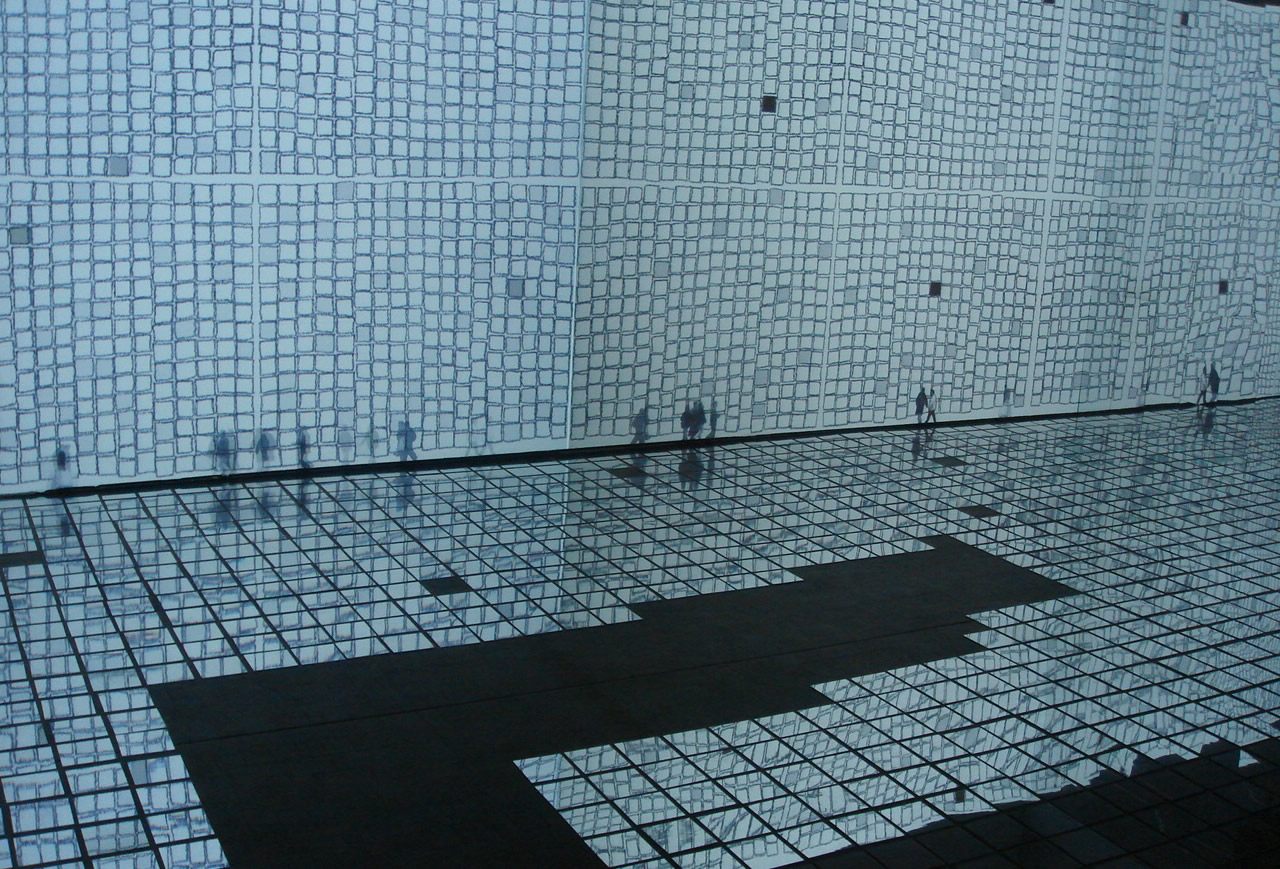
Choi, Won-Jung, "Why not here: murung dowan", 2006 >
8. Space as Information
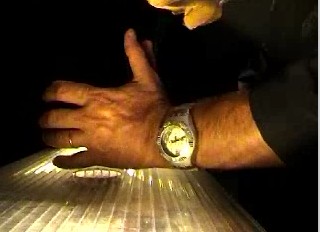
Marcos Novak, Invisible space, Venice Biennale >
Does color really exists?

a. perception of colour. Psycology of perception
CONTEXTUAL
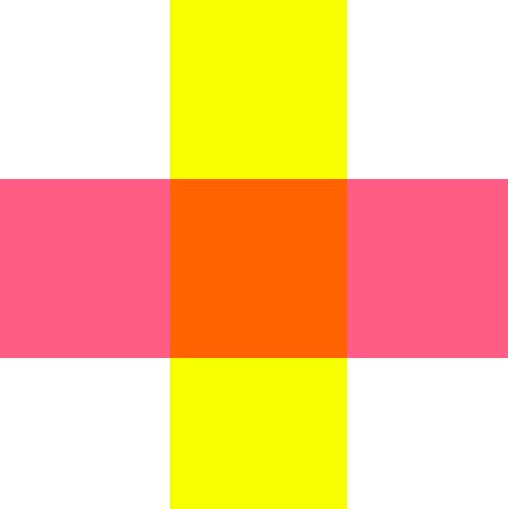
this refers also to transparency
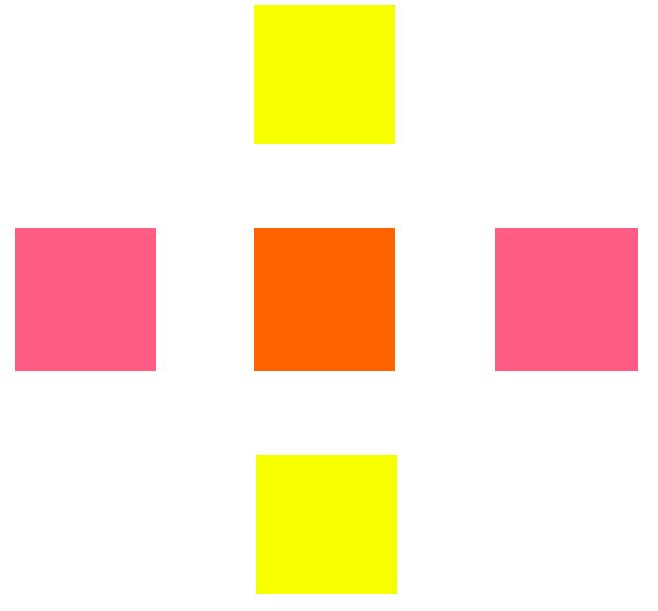
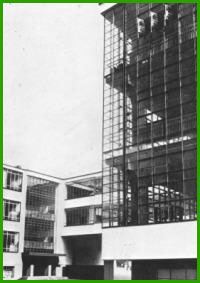
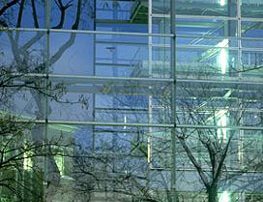
Walte Gropius Bauhaus, Dessau | Jean Nouvel, Cartier Foundation, Paris
2. Physiological
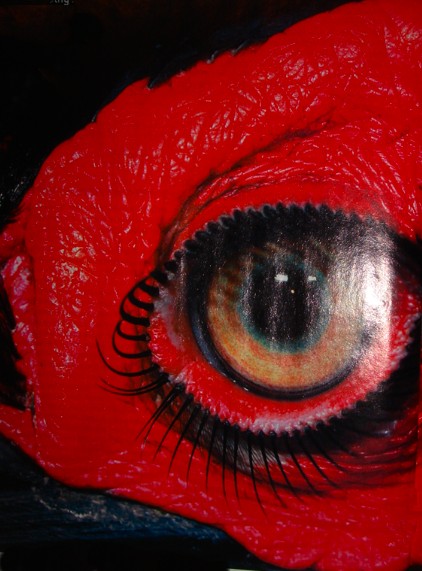
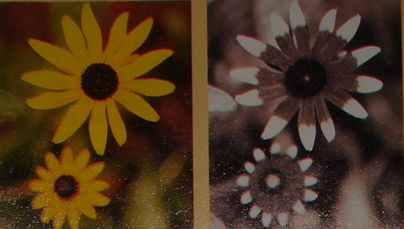
Picture by Andrew Davidhazy
3. Cognitive.
What colour is the ice?
What color is the sky?
To Italy
Who knows the land where the sky
of inexpressible blue colours itself? ....
Inexpressible blue!
All’Italia
Chi conosce la terra dove il cielo
d’indicibile azzurro si colora?
dove tranquillo il mar con l’onda sfiora
rovine del passato?
dove l’alloro eterno ed il cipresso
crescon superbi? dove il gran Torquato
cantò? dove anche adesso
ne la notte profonda
i canti suoi va ripetendo l’onda?
la terra ove dipinse Raffaello,
dove gli ultimi marmi
animò di Canova lo scalpello
e Byron rude martire ne’ carmi
dolore, amore effuse e imprecazione?
Italia, terra magica, gioconda
terra d’ispirazione!
Aleksandr Puskin
Now let's make a decisive step: but if the colour does not exist in reality and it exists only contextually, we should understand that the colour is one type of "information". True information!, as we have already defined that is: "application of a convention to one data". In this case the data is the electromagnetic radiation, while colour is nothing more than a psychological, physical and conventional use of information! Red wants to say stop, green go, but only in some contexts and some conventions.
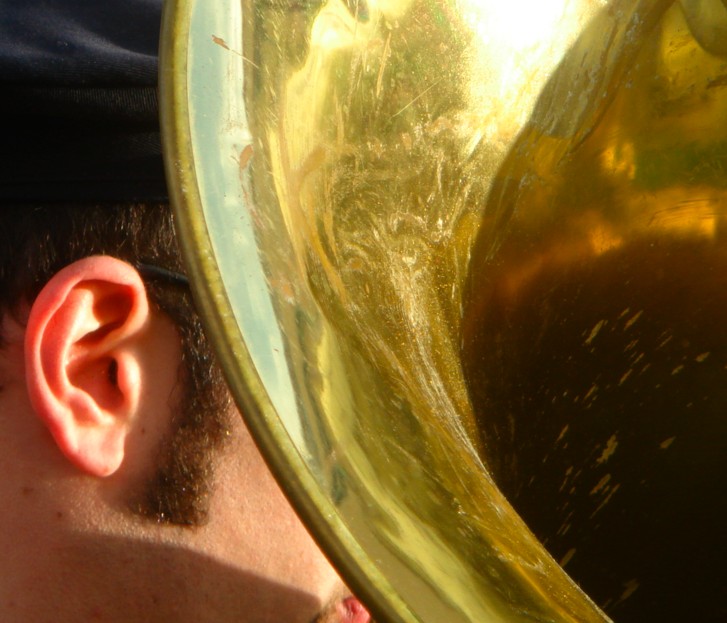
8. Space as Information
Now look at this picture
What about radio signals ?

And air jet routes

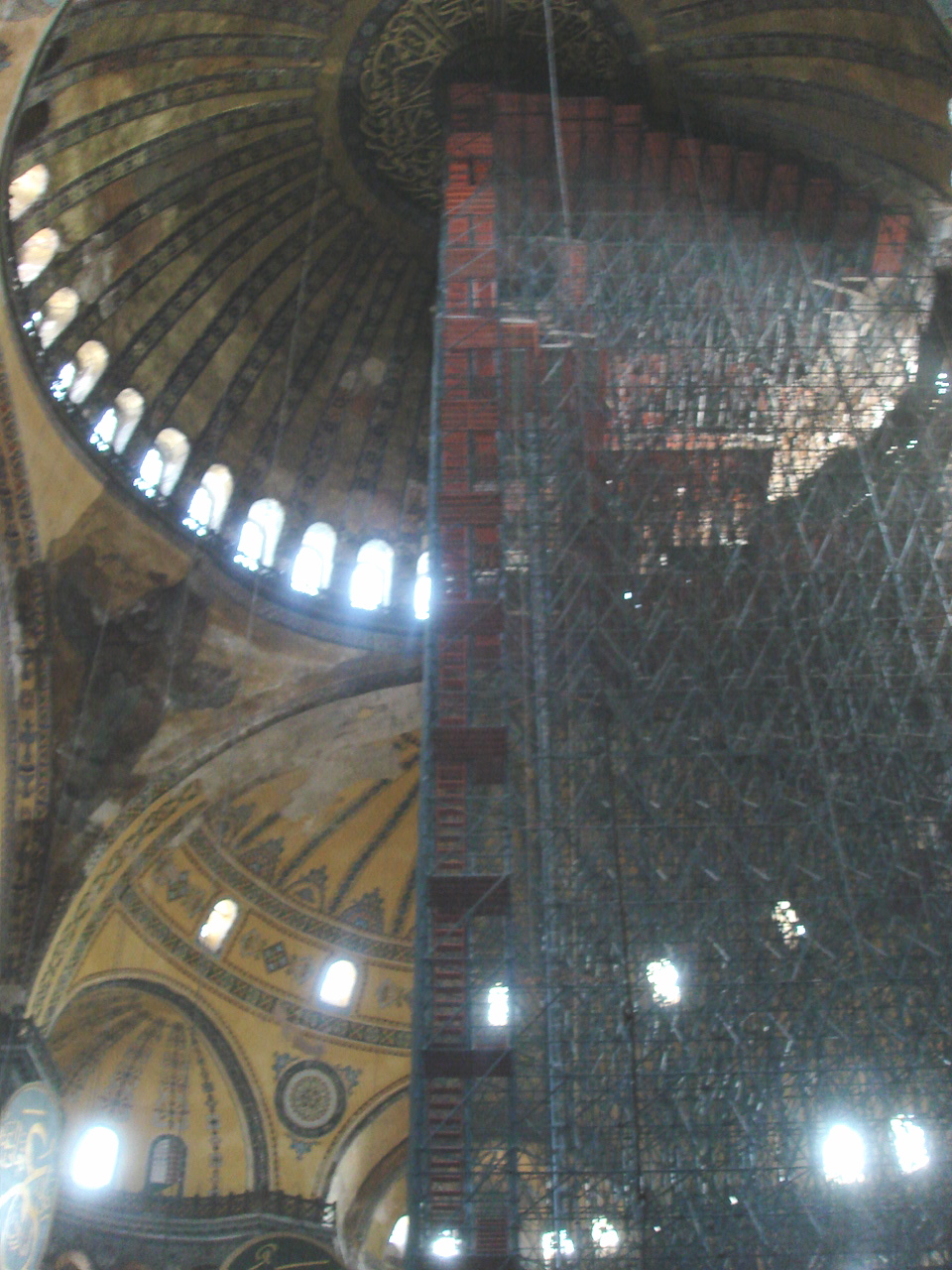
Santa Sofia
Space is information we can design and change its properties, values and characteristics, and we can also manipulate it to have some kind of projction of other dimensions
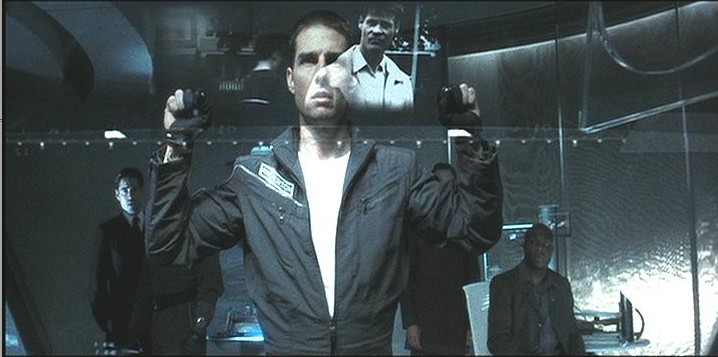
Steven Spilberg, Minority report
READY FOR ALL OF US
http://www.youtube.com/watch?v=u2qVwshjaf4&hl=es&fmt=18
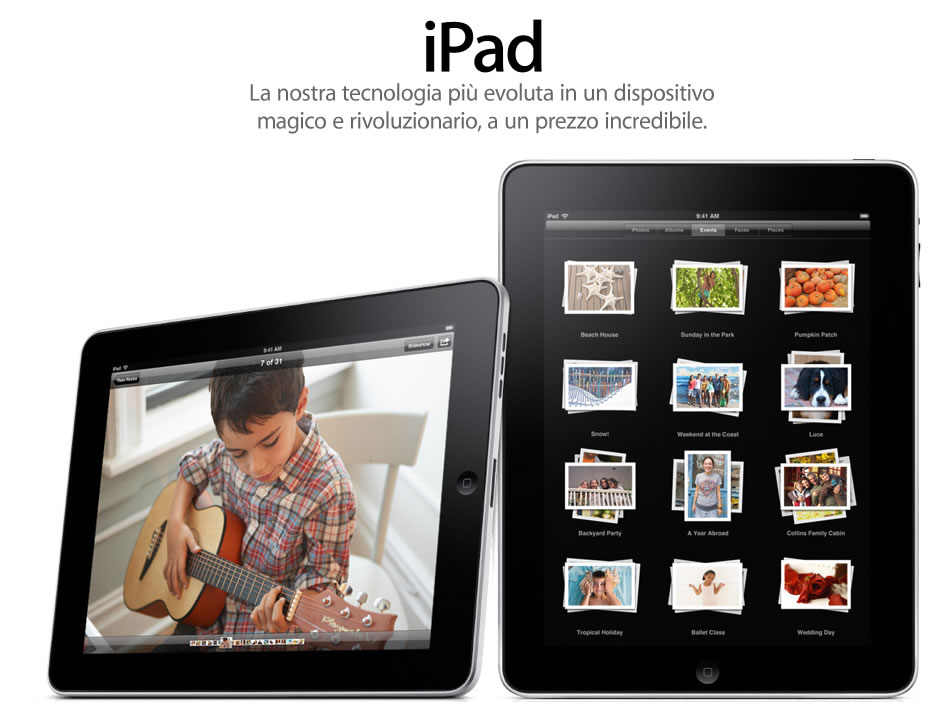
Look and Understand what Nicola Negroponte envisioned!
In 1984 !
It is "jsut" incredible:
Gina (a friend of Rita)
Finally space
And now we are ready to directly discuss the issue of space. Does space really exist? At this point in our discussion, the answer is obvious: it exists and it does not exist. Matter exists, not space. Space is absolutely dependent on the context and on the physical characteristics of the receiver. Perhaps the space that is known to a bat is "equal" to ours? A bat does not see but it sends sonorous waves like a radar. Is the space that the bat lives in like ours? Or it is effectively a different one?. Imagine a small worm that goes around our same room. The worm knows only two dimensions because it just "strips" (slivers?). Is it's space equal to the space that we see from our third dimension? And naturally let's think of fish that only live in aquatic space. How can they conceive, from the depths of the sea, the notion of mountains elevated so high to the point of snowfall?
In summary, if with Copernico we have understood that the earth is not at all the center of the universe, even though it appears to be our our point of view,, it must also be understood that the three dimensions that men experience are NOT the center of anything. We do not live at all in a kind of three-dimensional bubble in which everything is located and that we and our bodies watch and control. On the contrary, other spaces exist- other informative worlds! They are a series of parallel worlds that coexist although there are some channels, some passages, some small openings and some "projections" between these various worlds.
However, also the man when is put in a different conditions "sees" and experience space in completely different way. Lately I have spoken with the Italian astronaut, the colonel Roberto Vittori. Vittori describes space in the conditions of microgravity as completely different from the space we are accustomed to. A space in which one floats is a radically different one: it is a space full of possibility and of gorges and above all it is a space to be used physically and therefore cognitively differently.
For this reason I refer as a key image of this text (fig. 0) the Church of Saint Sofia in Istanbul. One can see in the image the large room under the main cupola as it was designed in half of the picture and in the remaining half occupied by an enormous scaffolding. The scaffolding can be read as an enormous matrix. In this case the matrix is physical, but imagine it as a virtual and electronic one. Sensors can in fact describe the points of the matrix-scaffolding and, activating these hidden but existing points of the space, various information can be placed (as Tom Cruise made Minority report). Imagine being able to experience (?) space floating like an astronaut. Or think, more simply, how space is experienced by a pigeon that enters that basilica and knows the gorges, the hidden places. It should be clear that space is a space-information absolutely dependent on the contextual, physical and cognitive principles we described above. Space exists only in the measure in which these three levels are effectively practicable by the receiver.
As Einstein wrote - (2) the most sensitive thing to say something about space it is time (I don't understand this sentence) (the most sensitive topic is that of space and time?)(and on this aspect much we have constructed). Einstein refers to physics, if we must approach space from our human point of view and to dare to add something to the concept of space, it is that "space is information'. Among other things space changes continuously and it is, even literally, " in formation".
Space does not exist as such. It is the application of a convention to the data of the matter. On the other side, the historical and scientific mutations of the concepts of space on which in other occasions we have written, is further evidence of the same argument (3).
Here we would like stop ourselves because it seems to us to have reached the point. It follows some obvious consequence for the architects who are interested in the research of Information technology. If the information is the raw material of this historical phase, and if the space itself is information, how can one design this new conscience? The first aspect of the answer is: "increasing its cognitive and contextual" characteristic. As we know, technology can be used like as a tool to augment reality. How can one design to render a way to perceive dimensions that are beyond our normal 3 dimensions and our limits?. The entire history of technology points in this direction with the artificial prosthesis that creates and expands our cognition and physical limits. As it is known, in the last physical elaborations of micro particles and in new molecular reactors, time goes backwords, but also the Internet is an incredible prosthesis, i.e. an incredible example of amplification to cognitive and experiential knowledge. The future development of architecture will be part of this process. The prostheses most powerful today, from the Internet to the nano technologies that concurs with the materials to the change of colour, density, characteristics go in this direction. And then, as always, there is the great topic of the interactivity and of the dynamic interconnections to which we often return and to which we have briefly fore mentioned.. The interactivity of architecture, is the natural catalyst because if space is information it most also hold true that with the exact dynamics of interconnections of electronics this consciousness may move far beyond our presently known dimensions and limits.
(from A.S. The IT Revolution in Architecture, Thoughts on a Paradigm Shift, 2008 >)
9. Crisis Modernity and Information Technology: Course 5th year @ La Sapienza - Saggio
Special Session Organiser: Prof. Antonino Saggio, La Sapienza University, Italy
One possible definition of Modernity relates it to the concept of Crisis. Thinking along these lines, “Modernity is the effort to answer to crisis and in so doing urges and promotes the necessity of new Aesthetics”
I am putting in words a way of thinking that has different master thinkers, but that motivated the theoretical effort that is behind “IT Revolution in Architecture”. For Crisis, I intend the historical process of transformation from the Industrial Paradigm to an Informational one; for Modernity I intend the positive effort to address the crisis in front of us putting at the center Information Technology, not because we like it but because IT is the propellant of our times. The results bring “Revolutionary” aspects in considering the historical magnitude of the shifts in front of us.
Now, this special session of the conference on Intelligent Environments called “Crisis Modernity and Information Technology” is looking specifically for contributions that address the just described crucial relationships.
In other words, the stress of the papers should be put (a) “In a situation of crisis” (pollution, poverty, emergence for disasters, risks of different nature and sorts, atmospheric or land situation etceteras) and (b) in addressing the crisis situation with an intelligent and creative use of Information Technology.
The case studies and projects can be at a very large territorial scale or at minimum scale of object design. The issue to establish in the paper is how Information Technology is crucial in addressing and solving the issue.
IT has not to be only a toy for the houses of the richest but a crucial tool in the growth of humanity. Right? >>
Examples from Antonino Saggio Chair at La Sapienza University Rone >

Saggio Course 06 Arrows >
Stefano Aiello - Joana Martins - Marta Moccia - Valentina Pennacchi - Luigi Viapiano
Saggio Course 09 Final work of Modernity, Crisis and IT
Crilo
LABES
il teatro nella stratificazione archeologica
cristian farinella - lorena greco
L'interattività nel teatro viene vissuta come momento di supporto all'interno della rappresentazione scenica,in chiave semantica e non puramente "tecnologica".La ricerca condotta,sviluppa tematiche legate all'uso della tecnologia per rendere possibili spettacoli all'interno di un contesto morfologico fortemente stratificato e attraverso di esso trovare un motore economico per lo sviluppo di un progetto di scavo e di riuso di un mondo sommerso e altrimenti inaccessibile che è quello dell'archeologia a Roma.
http://crilo.altervista.org/corso%20caad/labes.htm
Scaricatori d'i.porto
T.o.Te.M
Tree of Technology Movement
Michela Damiani, Luca Di Carlo, Francesco Faccini
Le modalità di trasmissione delle informazioni si sono smaterializzate, non si tenta dunque di definire uno spazio fisico, quanto un processo in grado di permettere l'instaurarsi di relazioni complesse tra tipologia fisica ed informatica. T.o.Te.M. è l'elemento base per un finto bosco interattivo. E' un ipercorpo basato su G.I.N.A. ovvero Geometria e Funzioni in un numero N di interpretazioni.
a http://lucadc.altervista.org/CAAD09/Totem.html
10. Works: Thesis Project research @ La Sapienza - Saggio

Watch and study this volume here on line Link local link >
ANTONINO DI RAIMO
Advisor A. Saggio
Flux Greece, Danza e Architettura >>
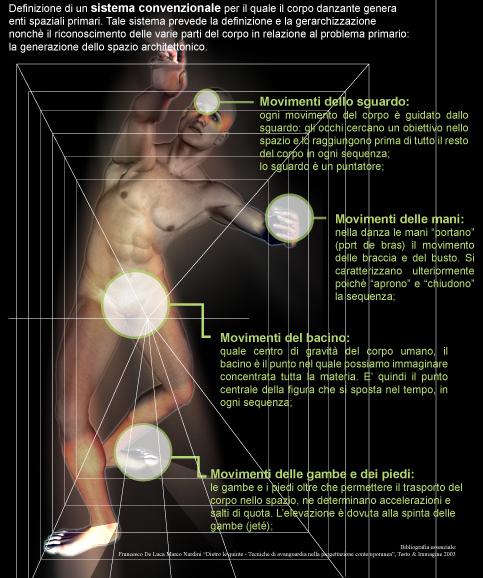
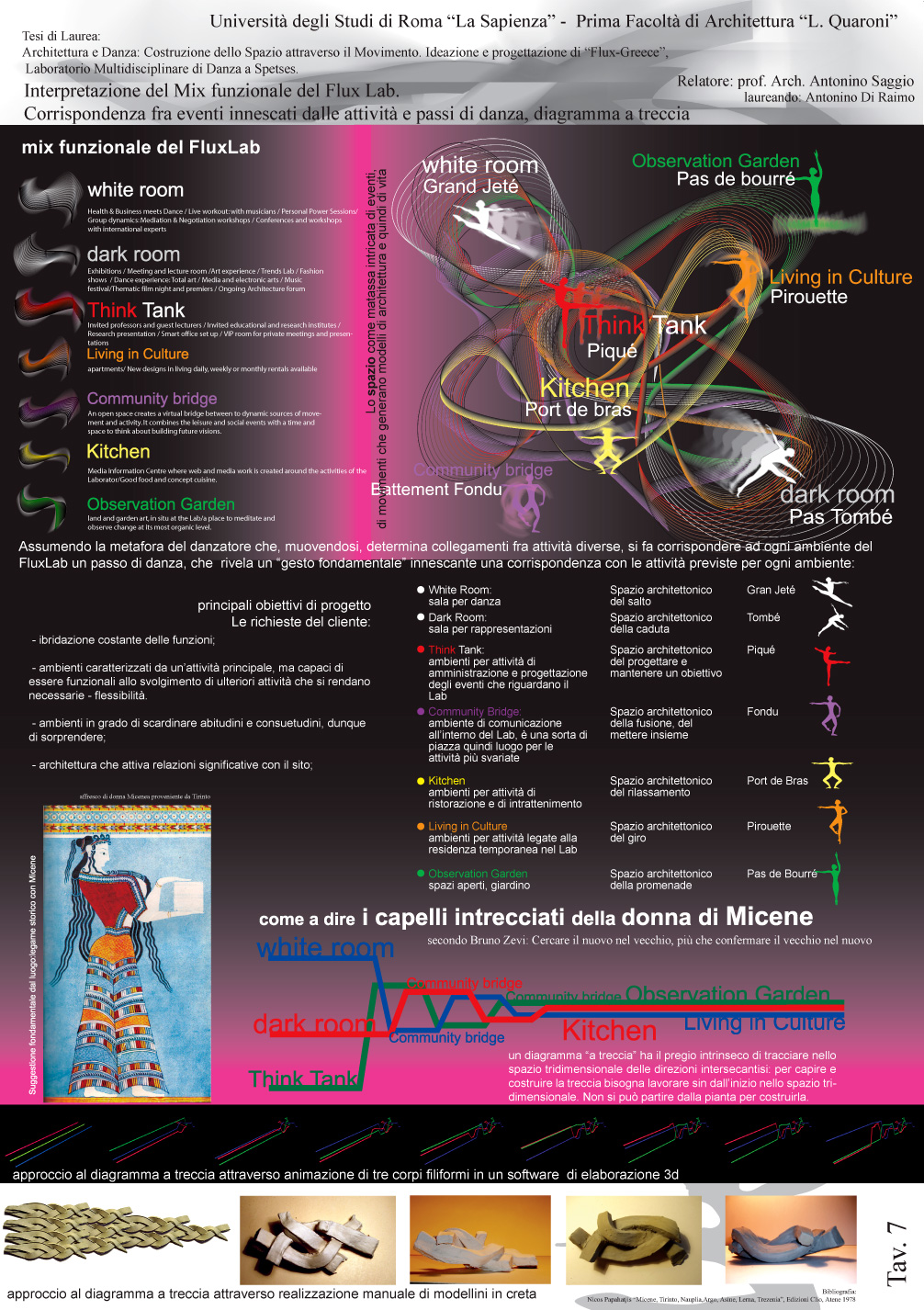
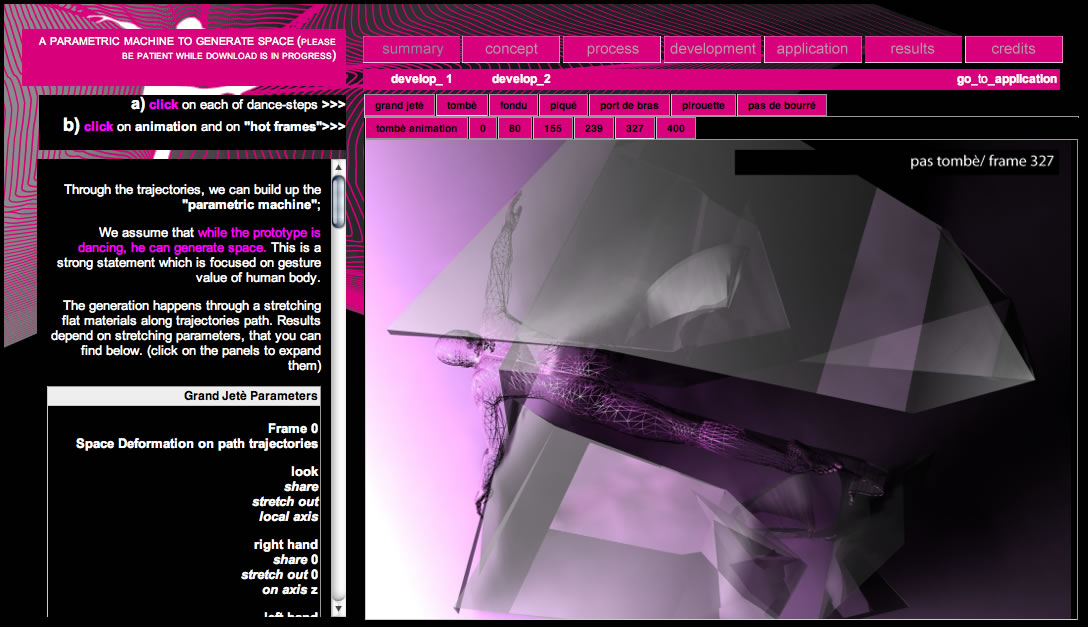
Go to Feidad version and Prize
ANDREA SOLLAZZO
Advisor A. Saggio
New Buildings for the European Community, Rome >>
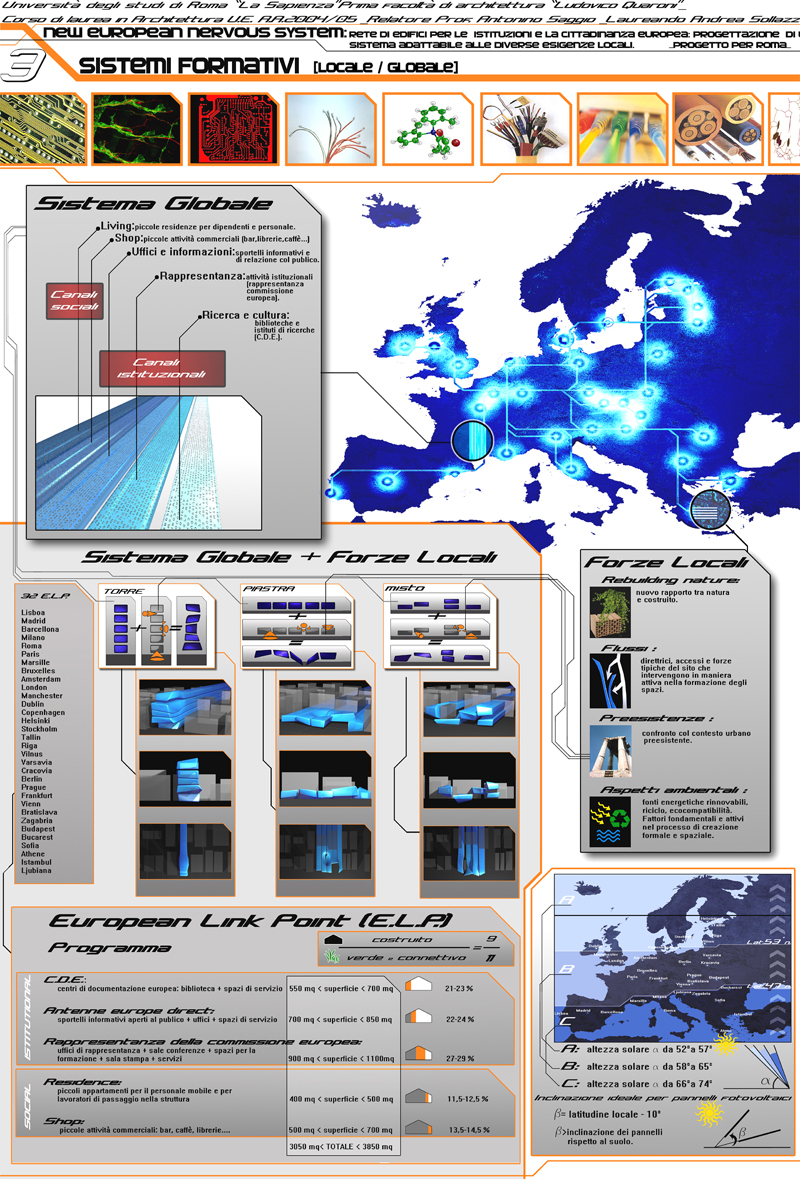
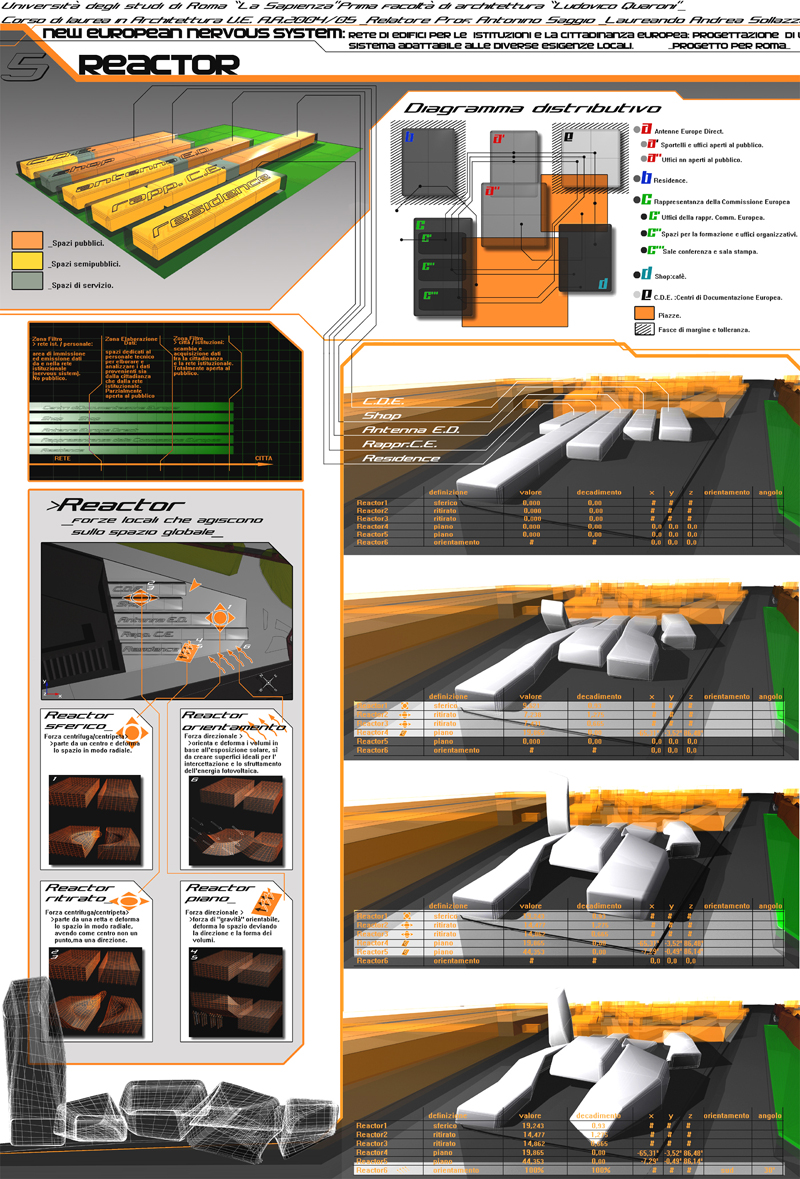
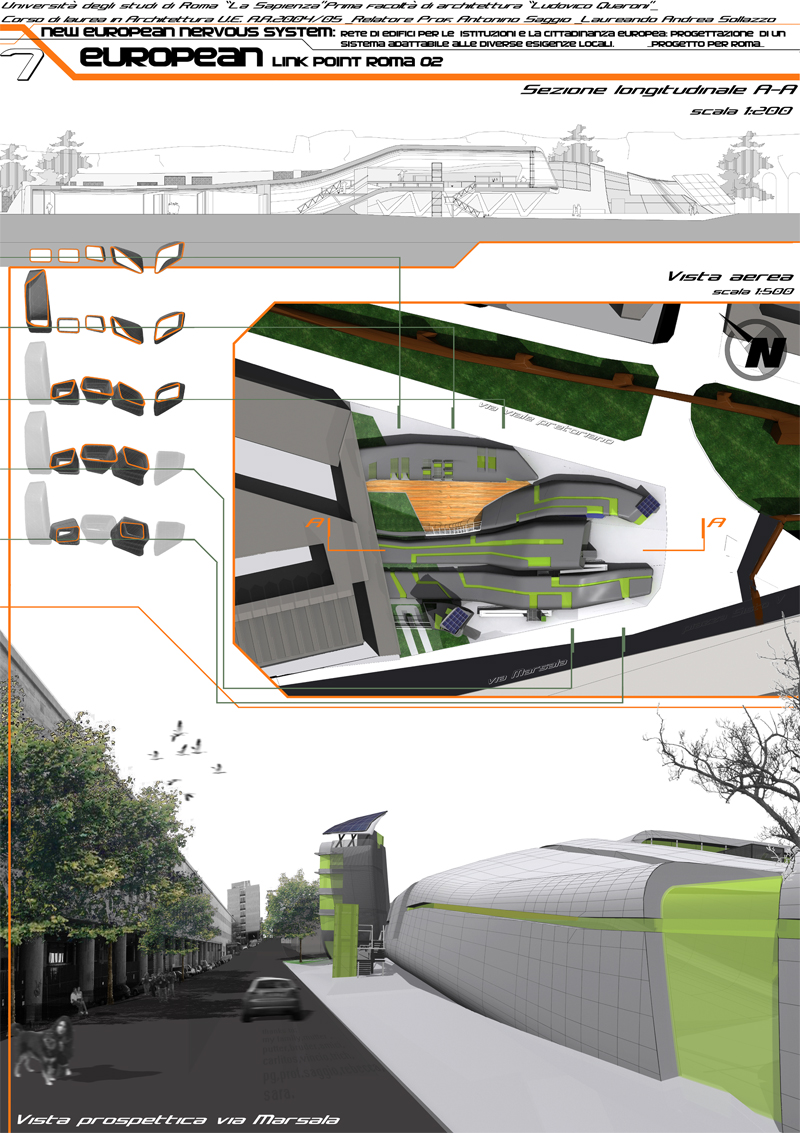
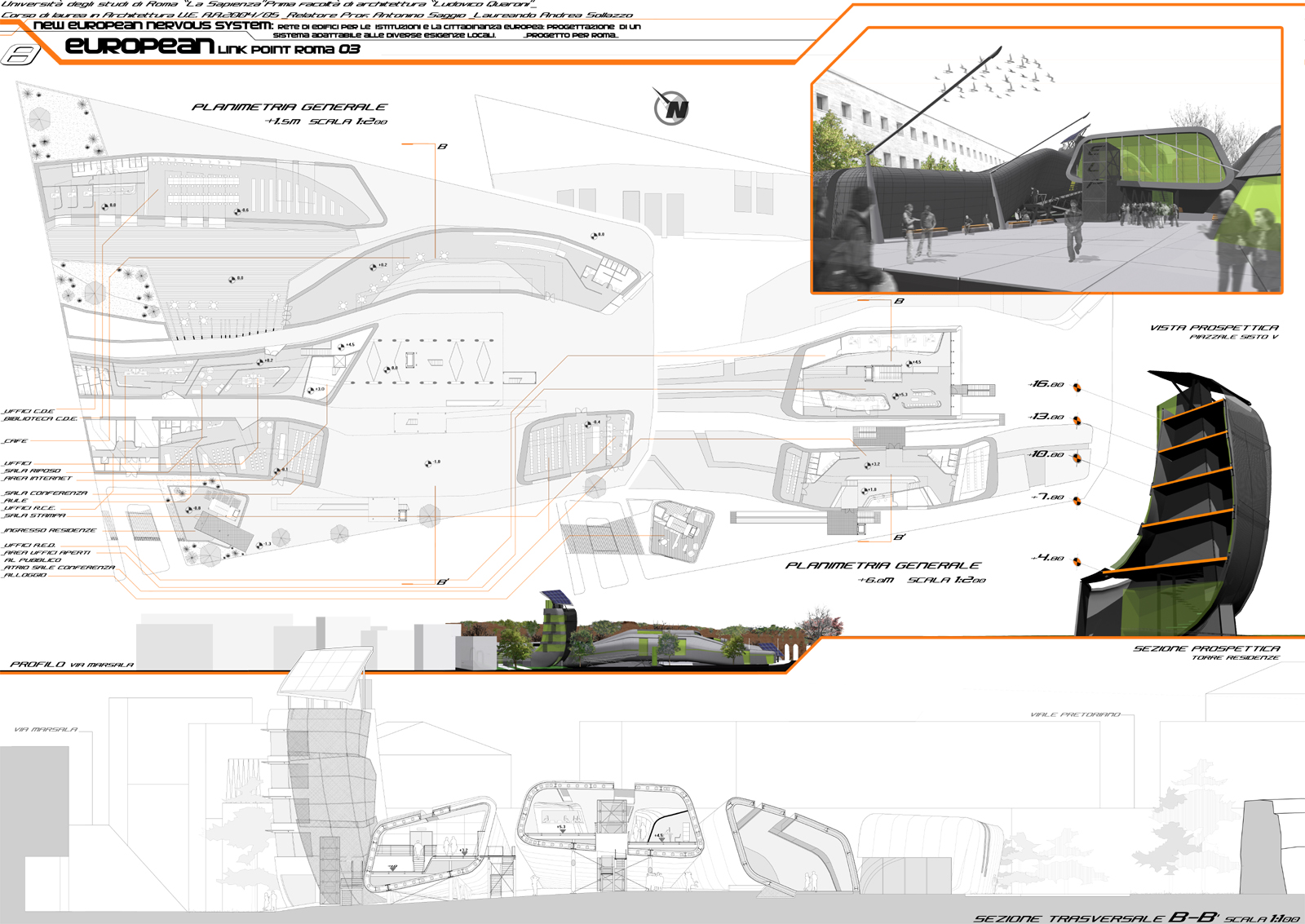
MATTEO ALFONSI
Advisor A. Saggio
MOB Museo dell'opera Boroominiana a Villa Pamphilj, Rome >>




10. Works: NitroSaggio & Sicily Lab
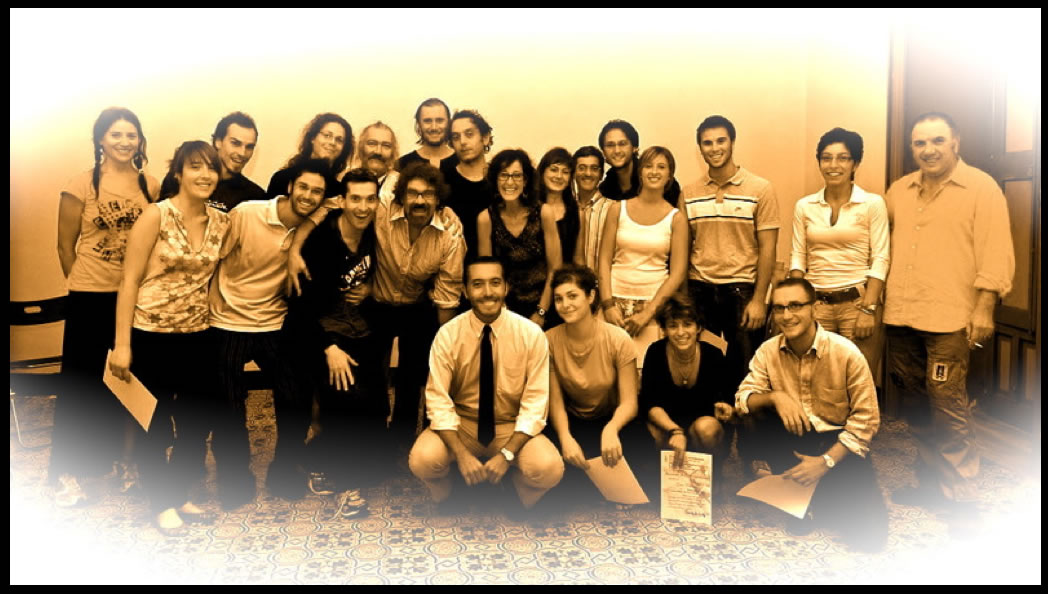
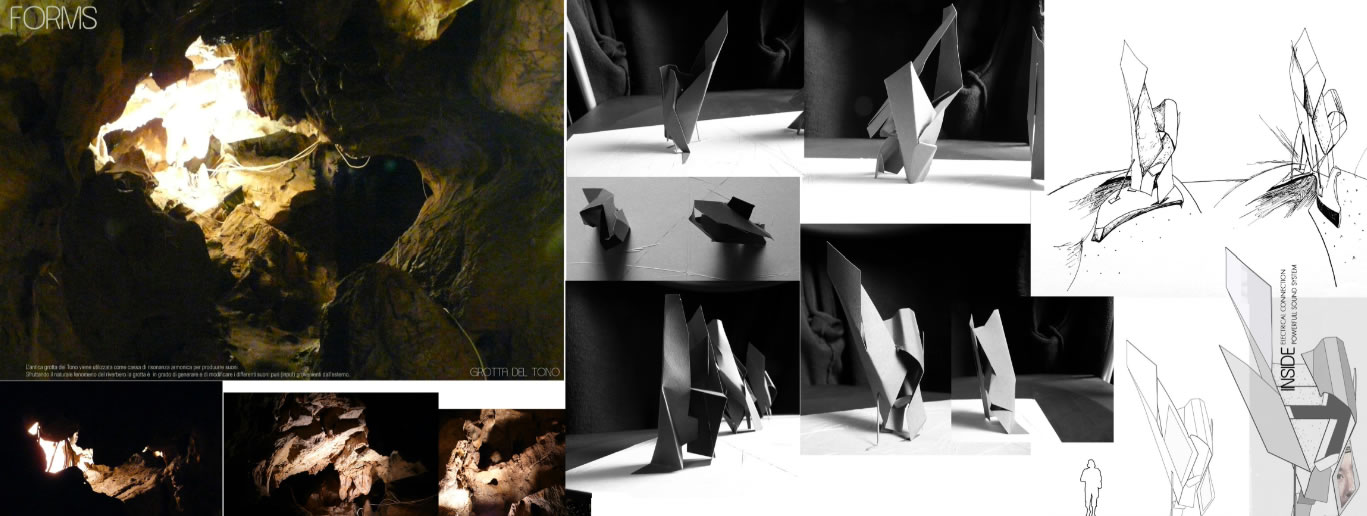
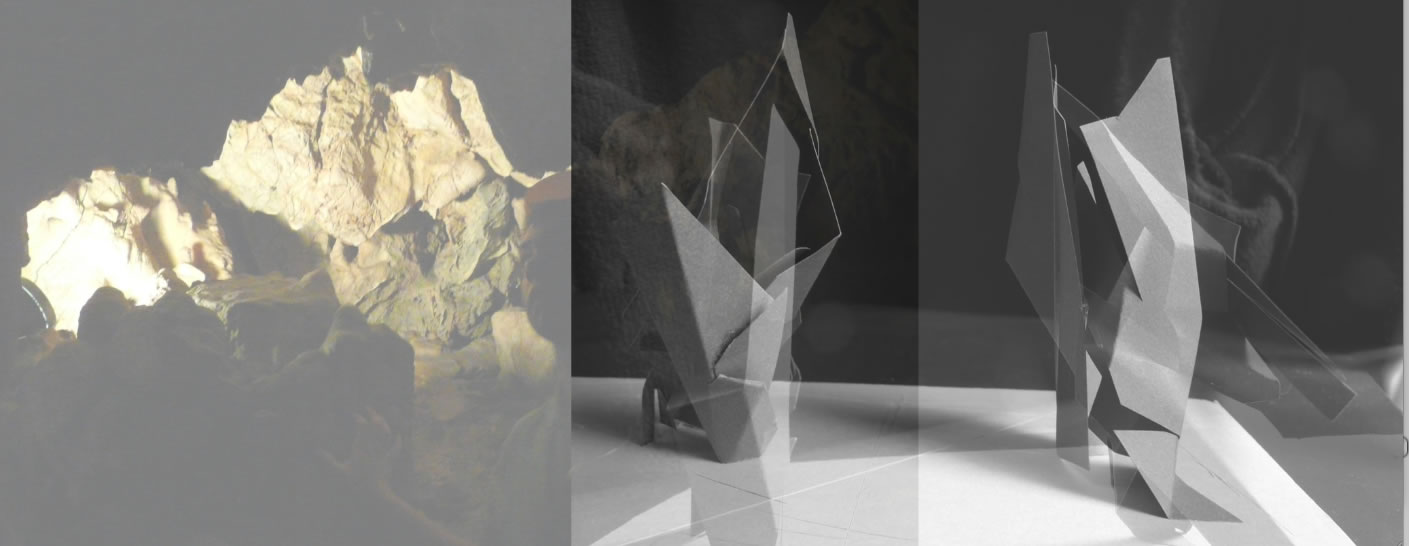
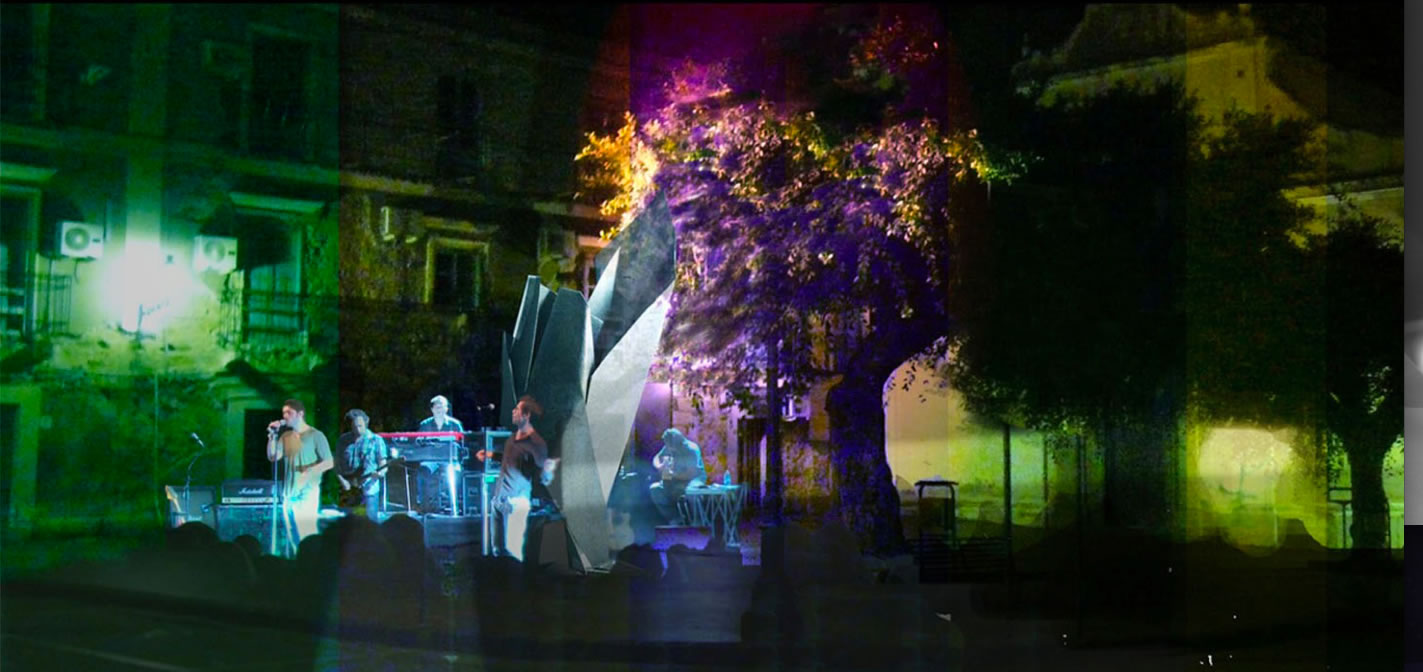
Suoni e nuovi luoghi urbani a partire dalla grotta preistorica del Tono a Gioiosa Marea, Progetto di Christian Farinella e R. Kelley. Workshop del Sicily Lab di Gioiosa Marea (Saggio con Del signore e Goodwain Tulane U.).
NITRO SAGGIO NET >> in SicilyLab >>
Among the research work of Nitro is the project Memnostyle for new issues of cemetery space that integrates land treatments, architecture and new hybrid design elements, the project “Urban Eirey” that proposes an integrated element for urban situation that integrates leisure sound and air treatment and the built prototype “Electronic Palm” (an hybrid object half natural half highly technological that uses Optical fibers, sound and sensors)


ROSETTA ANGELINI, GIOVANNI BETTi, ANTONINO DI RAIMO EMANUELTE TARDUCCI nITrosaggio
“Urban Eirey”


ROSETTA ANGELINI, ANTONINO DI RAIMO EMANUELTE TARDUCCI nITrosaggio
Memnostyle for new issues of cemetery


ROSETTA ANGELINI, ALFREDO PRINCIPIA, ALDO MAMUCCARI, LORENZO MASTROIANNI, ALESSANDRO MAZZA, EMANUELTE TARDUCCI nITrosaggio
“Electronic Palm”

And Hypothesis of Utlization in Gioiosa Marea Messina
Gallery "Come Se" Rome
Places for events, exhibits installations in Architecture and the Arts
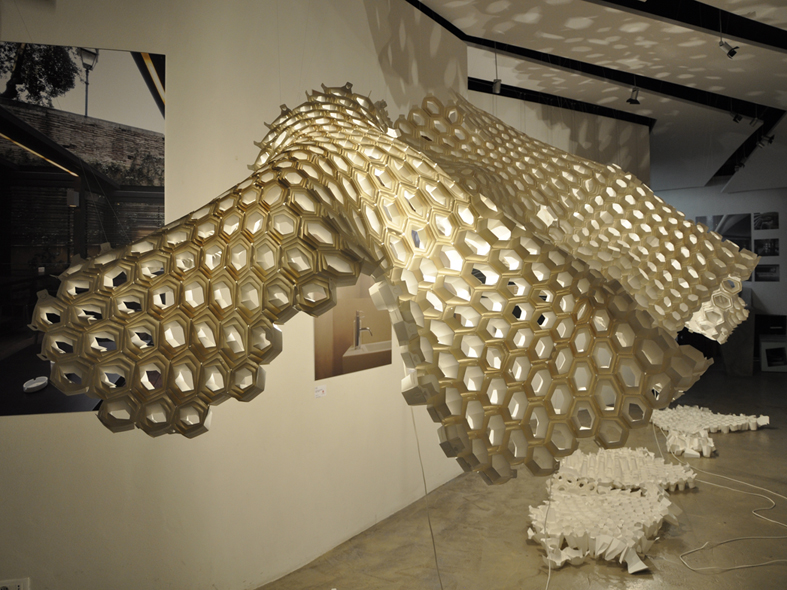
Architect & Director Rosetta Angelini, Nitro Scientific and project advisor A. Saggio
Tecno Primitivo
project by NitroSaggio.net designer in charge Emanuele Tarducci with C. Ampolo built in May 2007 at Giardino Sonoro, Florence experimental Sound Garden by Lorenzo Brusci e S. Passerotti "Il Giardino Sonoro" Florence >
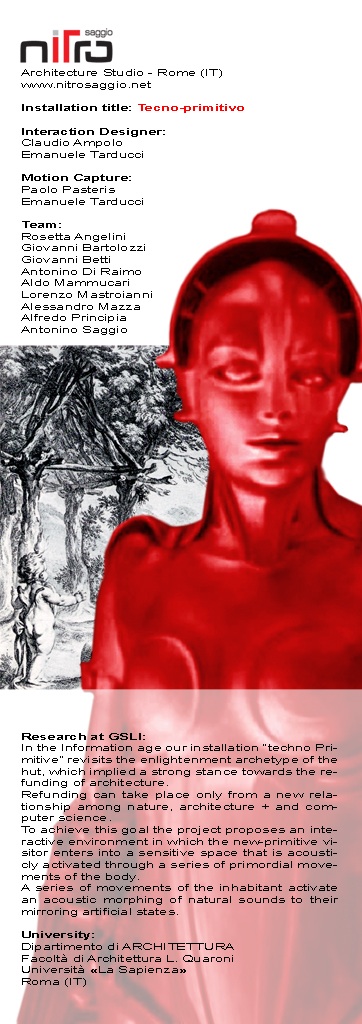


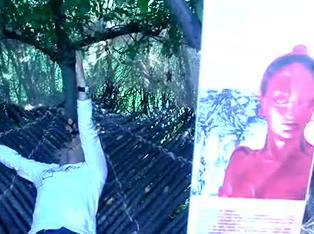
Installation Tecno Primitive >>
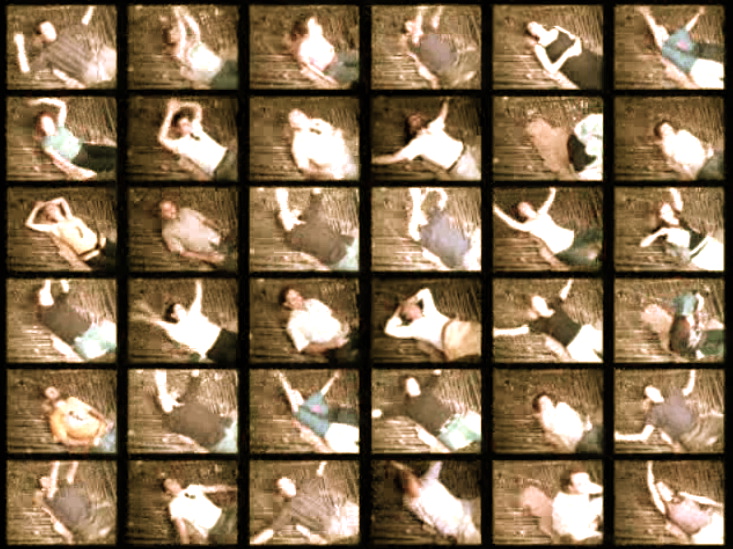
on Postural Tecno Primitive You Tube >
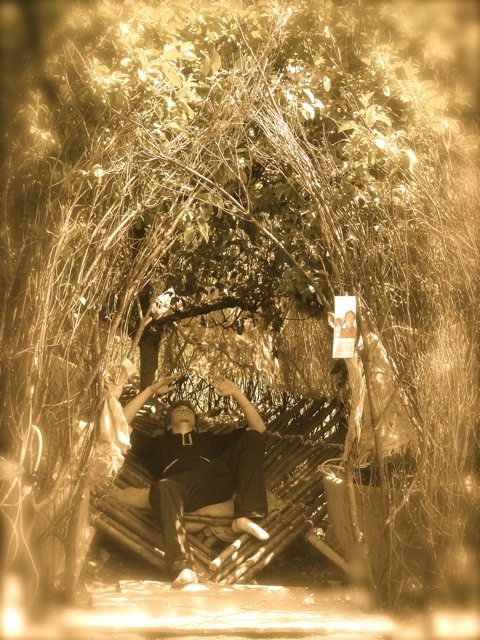
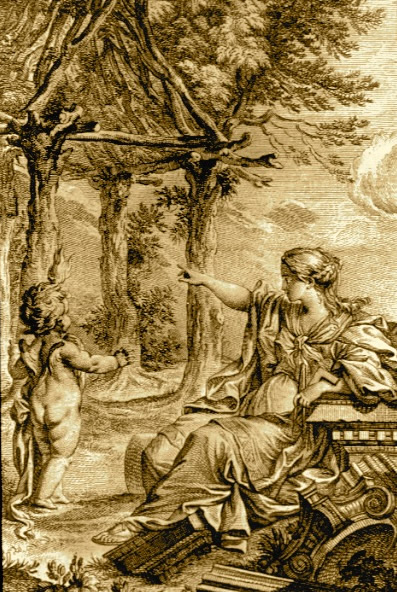
How All this Is connected with a global ecological awarness? This is a crucial answer and the topic of another lecture. Let's ancipated some issues
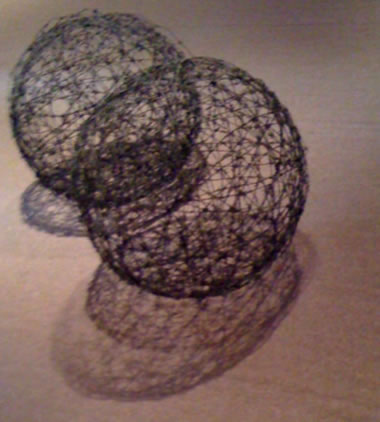
Algoritm by Fuller as reported by John Allen >>>
Buckminster Fuller's
Synergetic Algorithm and
Challenges of the Twenty-First Century
By John Allen, FLS
" This algorithm of creative design participation in human evolution consists of five steps: if there is a large scale design problem then take the synergetic overall approach; if you take the synergetic overall approach then proceed to a comprehensive anticipatory design; if you've started on this, then make detailed macro-comprehensive and micro-incisive studies; if these are completed, then proceed to do more with less; ephemeralize; if you've ephemeralized, then computerize to check rationality and to communicate; if you've computerized then check if you've increased the wealth of all involved. This algorithm constitutes his greatest contribution to dealing with the challenges coming toward humanity,in the next century, a time of great planetary troubles which he metaphorically referred to as humanity's final examination." >>>
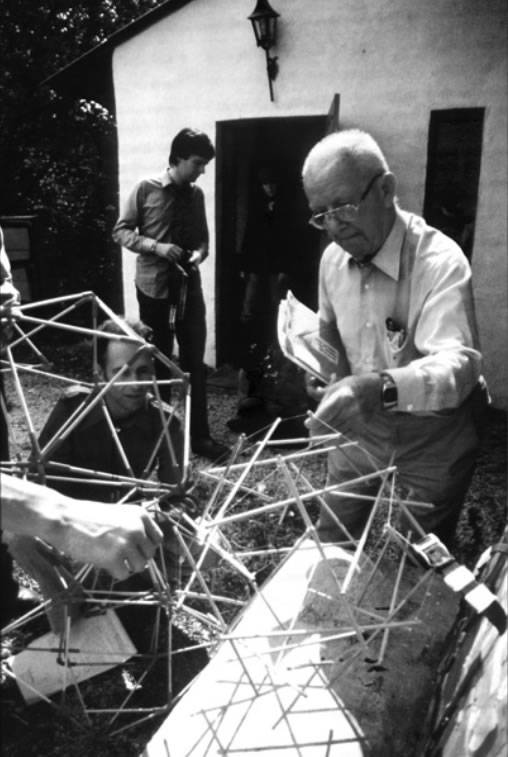
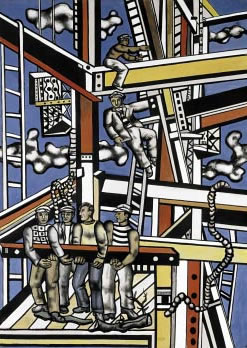
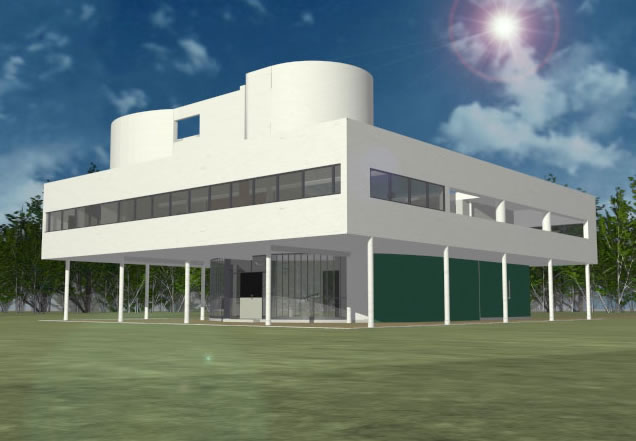
 :
:
Paul KLEE, Zaha HADID
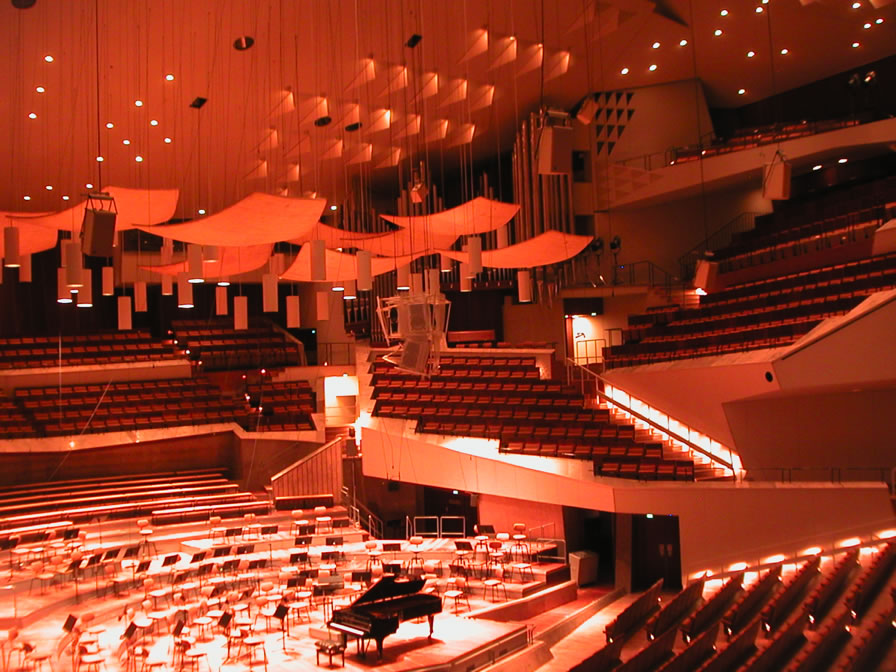

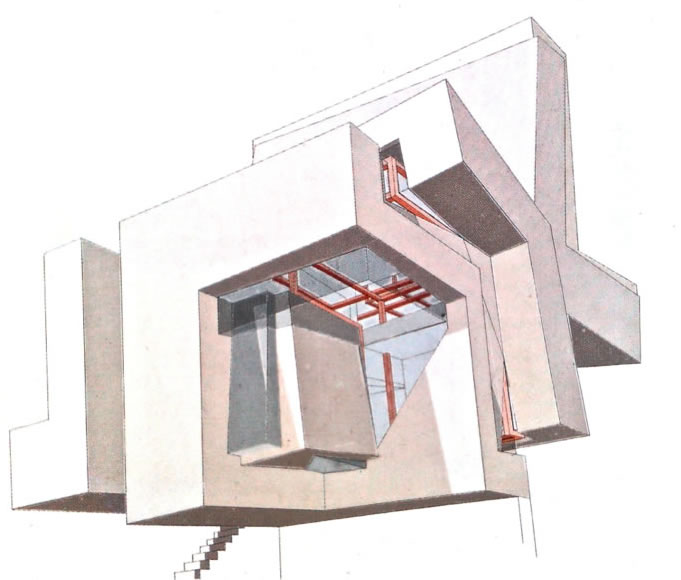
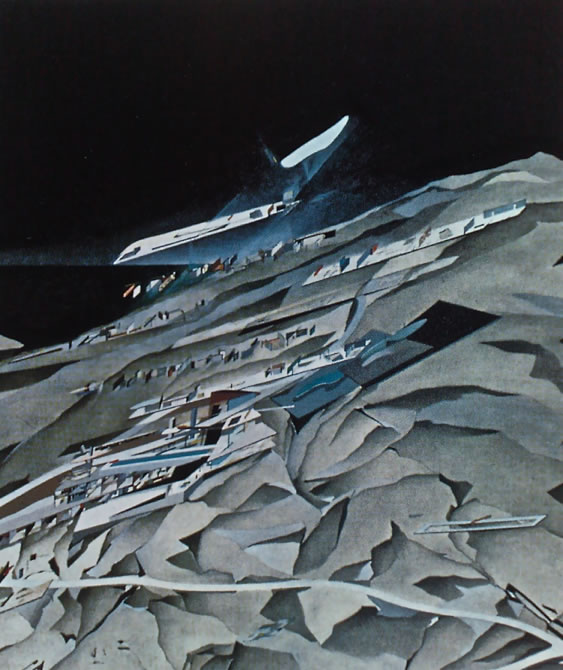
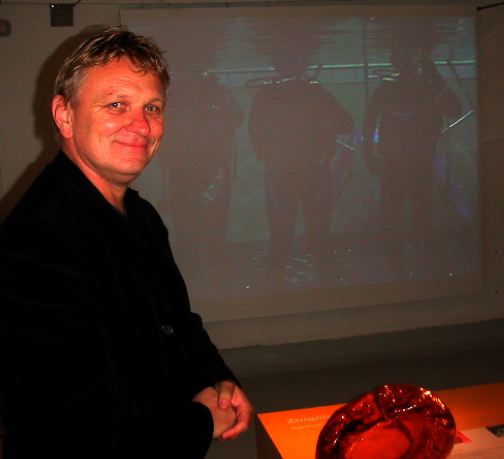
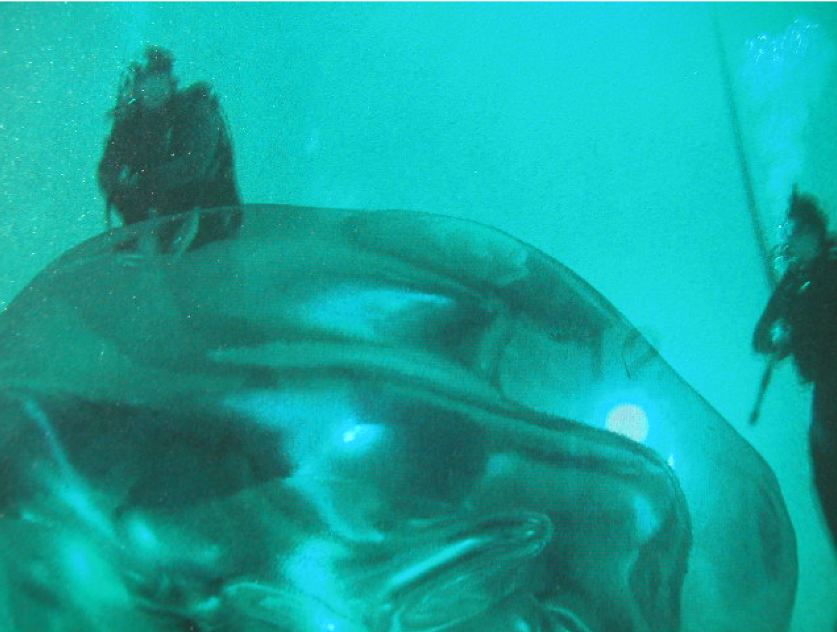
Zbigniew Oksiuta Breeding space >>

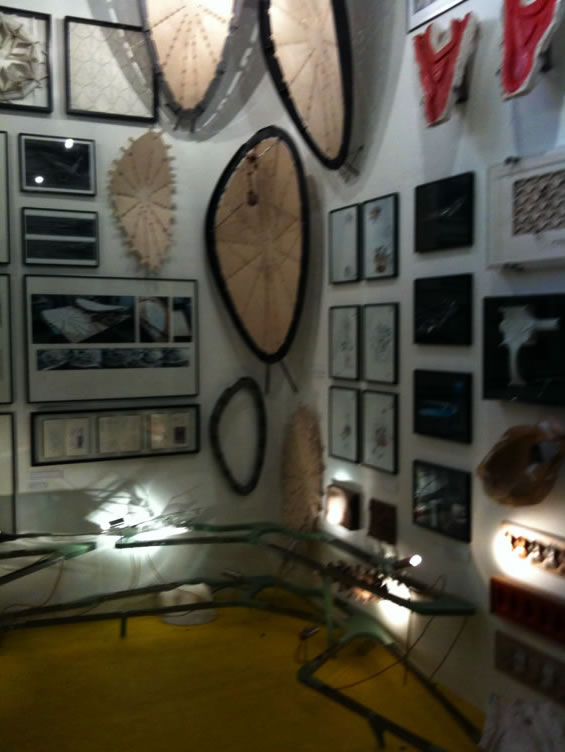
Bob Sheil e Emmanuel Vercruysse
On&Off Insert on IT and Architecture
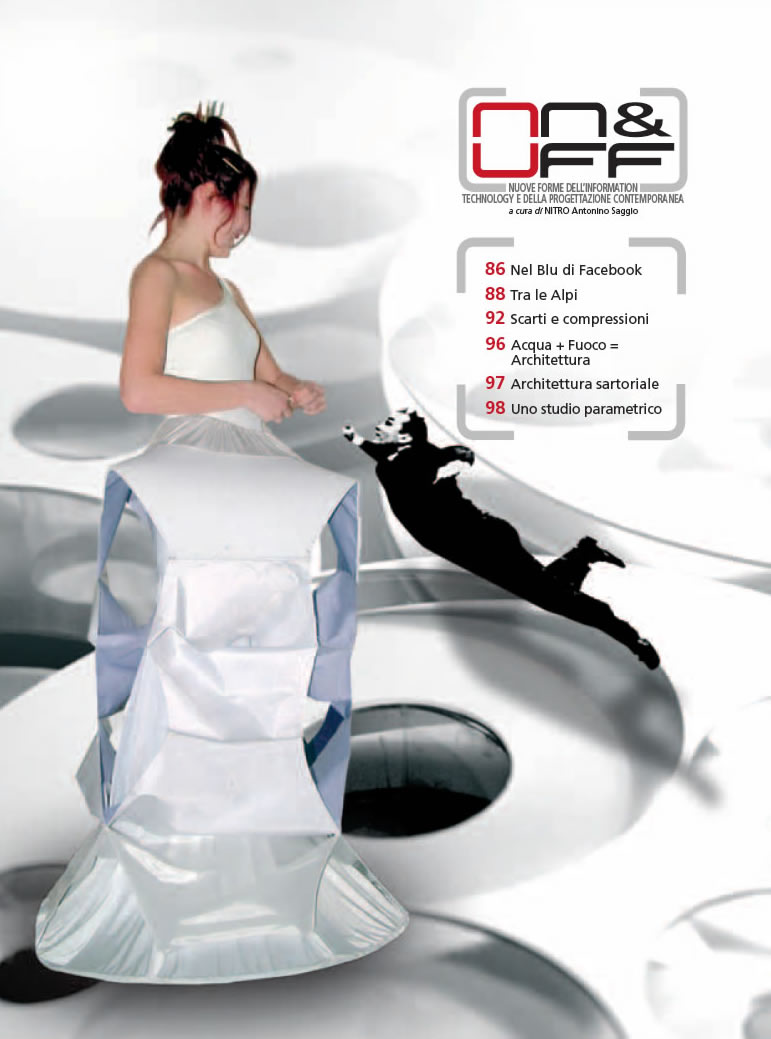
in L'Architetto Italiano #. 30 7/8 2009
Francois Roche R&Sie
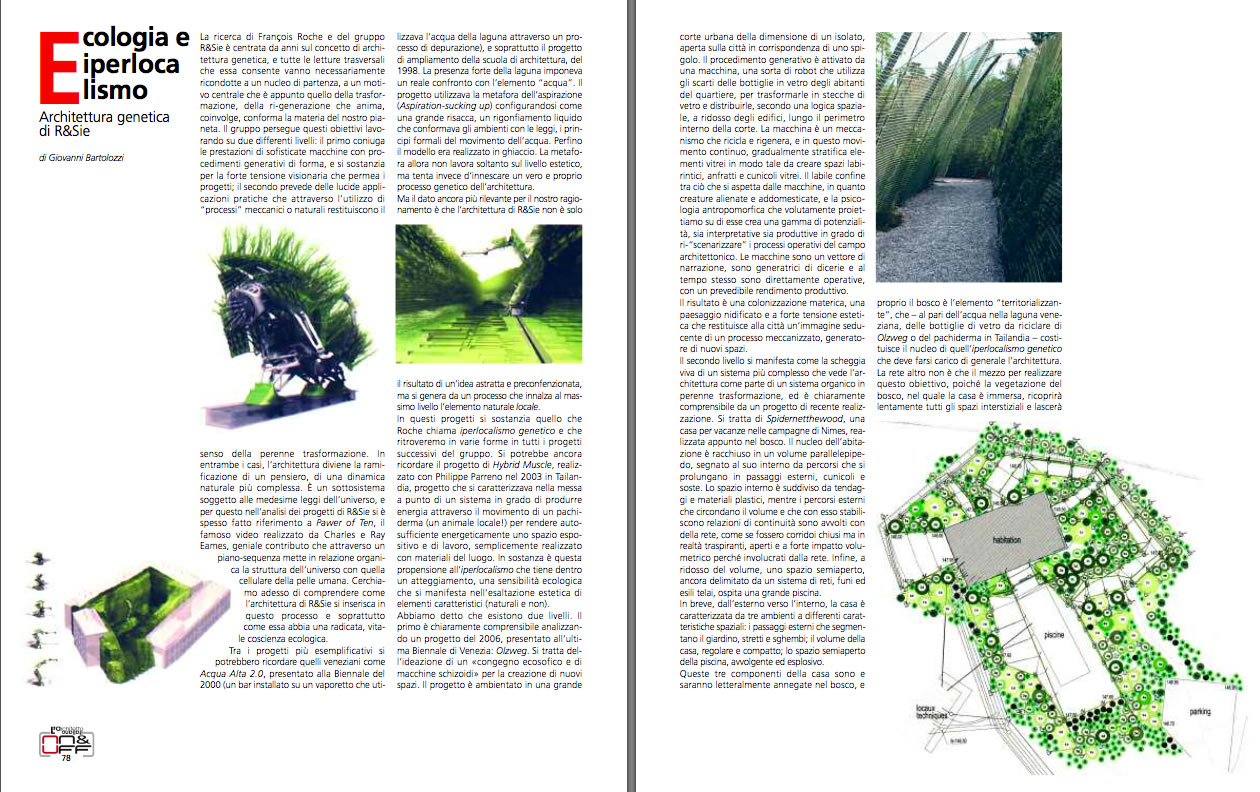
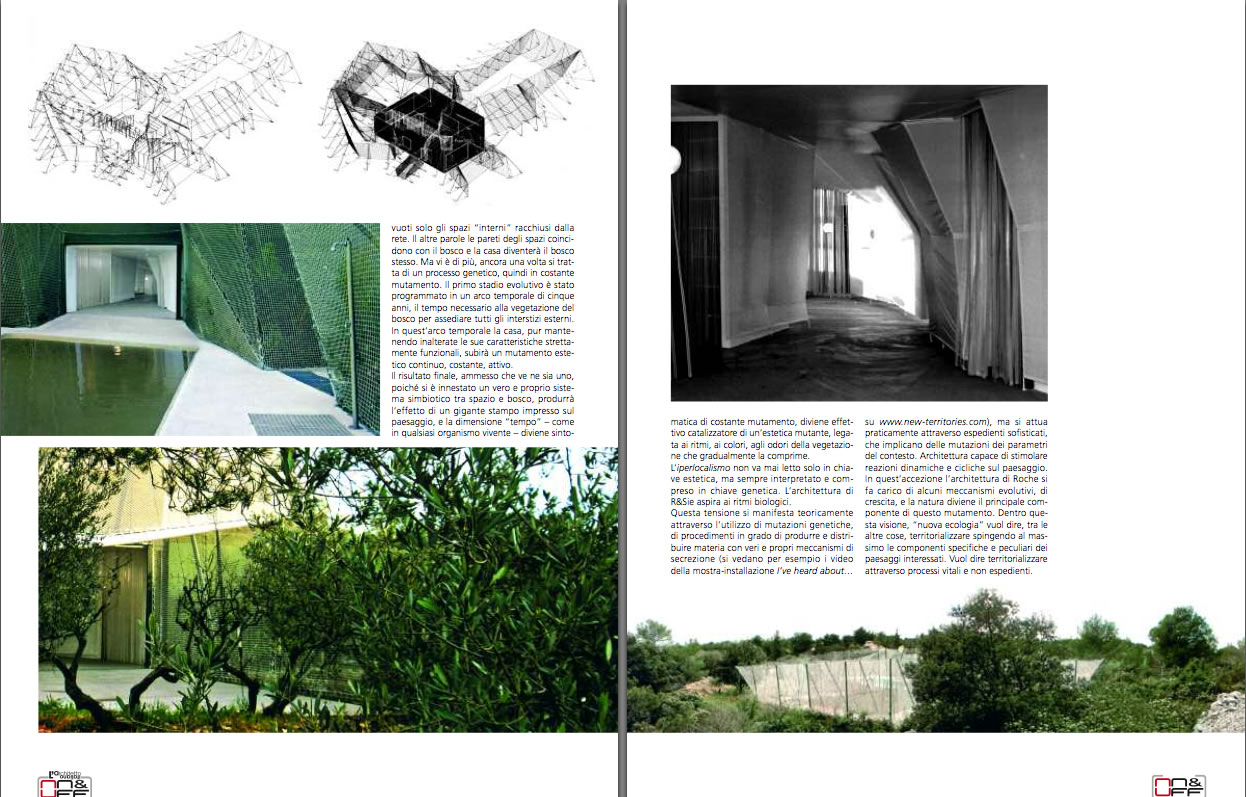
in L'Architetto Italiano #. 30 7/8 2009
Ecologic Studio
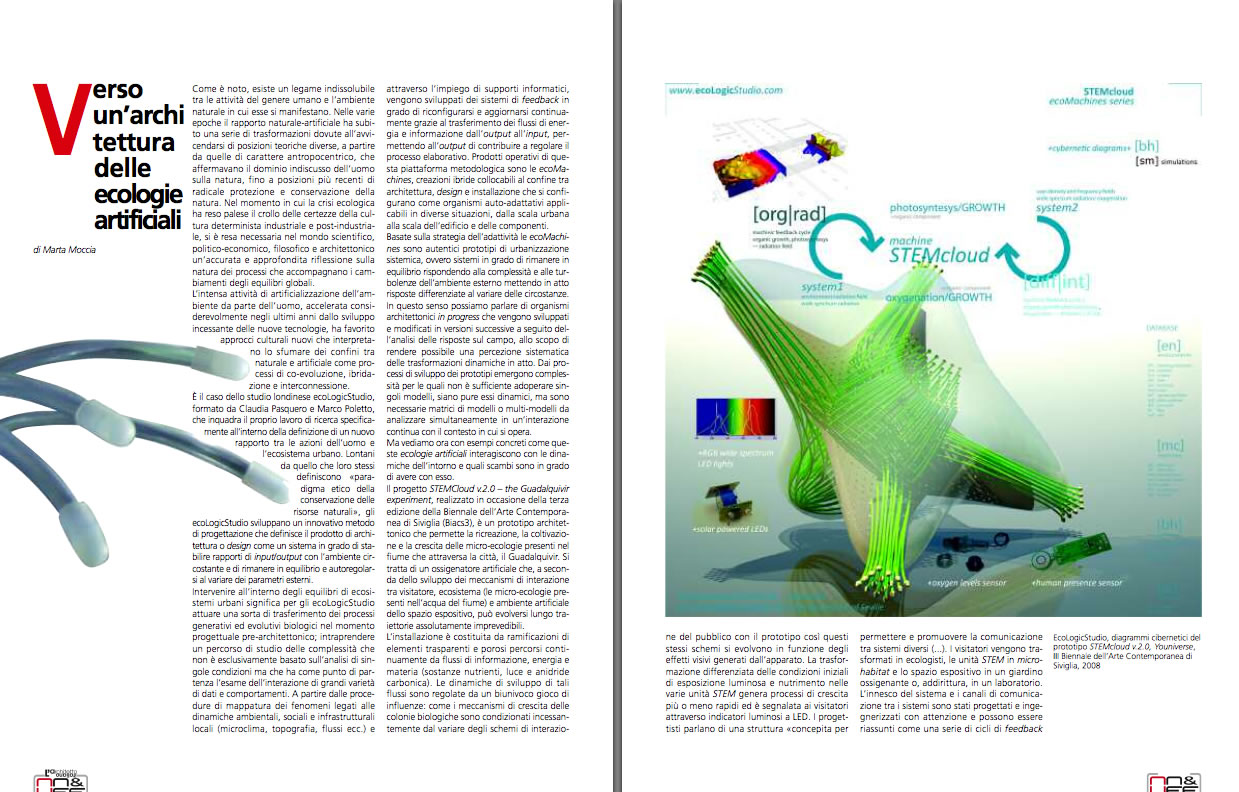
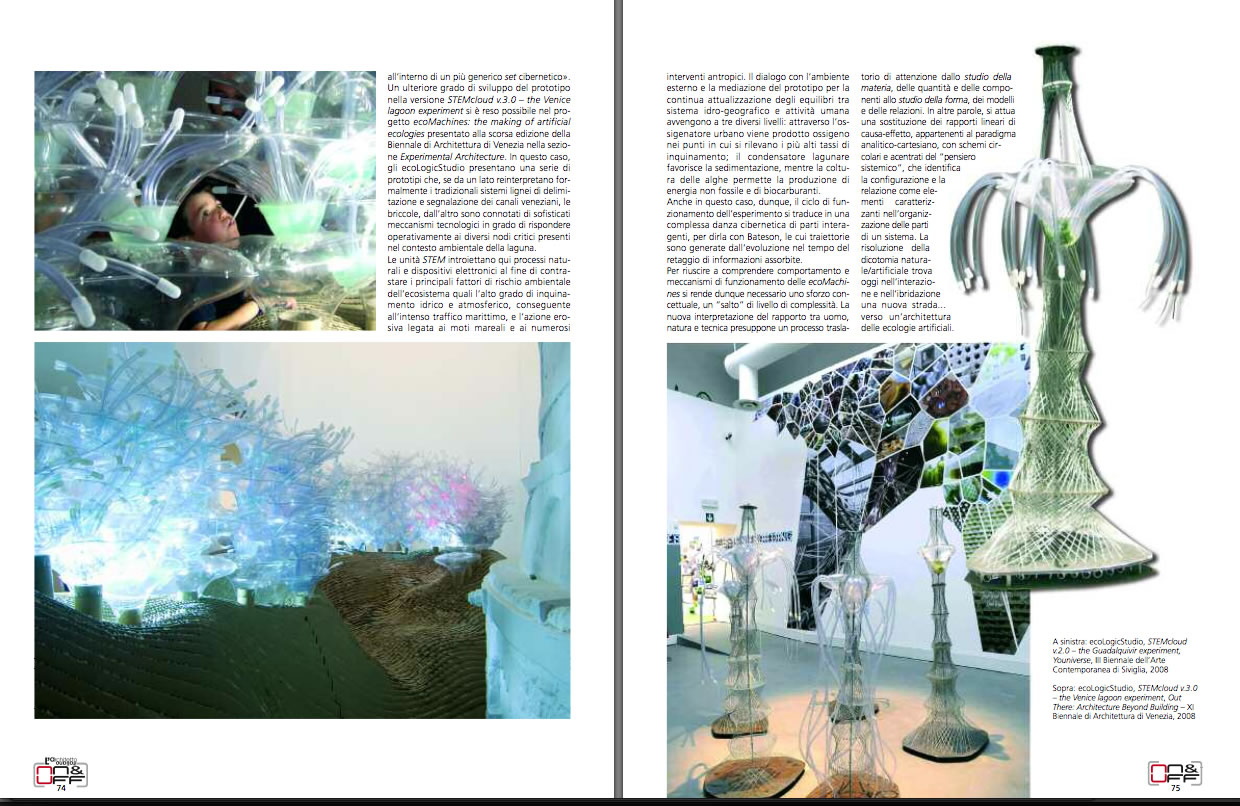

Some bibliography
Do You want To read a text with some topics discussed in this conference? Read here >
More ? Urban Voids and Projects for Rome

DESIGN THESIS IN ROME
URBAN VOIDS
Bottom up projects for Rome
1. Antonino Saggio, "Informazione Materia Prima dell'Architettura", Op. Cit., # 118, September 2003 (pp. 5-10). >
2. _____________, "Tempo. Tempo prima dimensione dello Spazio",Il Progetto, # 19, March 2004 (pp. 64-67). >
3. _____________, The search for an Information Space, In Kas Oosterhuis Lukas Feireiss (eds), Game set and Martch II . Episode, Rotterdam 2006 (pp. 214-219)
4. Osvaldo Da Pos, Trasparenze , Icone editore, Padova 1989
5. _____________, "Fenomenologia dei colori trasparenti", in Effetto trasparenza , (eds L. Bortolatto e O. Da Pos), Le Venezie, Treviso 1996
6 Antonino Saggio, "Nuove Soggettivita' L'architettura tra comunicazione e informazione", (Italian Translation of New Subjectivity in Digital | Real Catalog), Op. Cit. , # 112, September 2001 (pp. 14-21). >>
7 ____________, "Interactivity at the center of Avant-Garde Architectural Research", Architectura Design vol 75 #. 1 jan/feb 2005 (pp. 23-29). special Issue 4dspace: Interactive Architecture ed. L. Bullivant >>
8 Timothy Goldsmith, The Biological Roots of Human Nature: Forging Links Between Evolution & Behavior , Oxford Univ. Press, 1994
9 _______________, "Come vedono gli uccelli", Le Scienze, Italian edition of Scientific American, # 460, December 2006.